Views: 304
http://www.youtube.com/watch?v=xlEY6PhAtto
Dear People,
Anyone wishing to contribute to this documentary please contact me at:
Matzil_Nefoshos@yahoo.com
Let's make our voices heard. It's time to stop the never ending cycle of sexual abuse in the Jewish Communities. It's time to make every phony and despicable lowlife Rabbi tremble in their boots. It's time for righteousness to overtake evil. The time is now; not tomorrow!
EM
http://www.theawarenesscenter.org/confrontingabuse.html
Confronting Abuse In The Orthodox Community ![]()
© (2003) by Rabbi Yosef Blau
- Reprinted by Permission -
Originally Printed in Nefesh News, 7:9, July 2003
It is no longer possible to ignore the tragic reality that sexual, physical and emotional abuse exists within the Orthodox community. Recent revelations about rabbis and teachers abusing adolescents, often continuing to abuse for decades, dramatically remind us that our existing mechanisms are failing to deal with the problem. I am not aware of any statistics which clarify whether the numbers of offenders is substantial, but even a small number can traumatize hundreds of victims.
The full measure of the horrendous nature of abuse is not always apparent from a technical halakhic perspective. Two teenagers touching each other inappropriately are guilty of the same sin as a forty-year old rabbi touching a thirteen-year old female student. We intuitively recognize that the rabbi has used his position as an authority figure to manipulate a vulnerable child, though she is an adult according to halakha. A pedophile who abuses minors, even if he gets their approval, is halakhically a rapist, but not if he does the same with an adolescent boy or girl.
It is even more difficult to pinpoint the sin when dealing with emotional abuse and manipulation. While one can make similar technical arguments in other areas of halakha, its significance in this context is its use as cover for the many who do not want to deal with the full implications of confronting rabbinical abuse. Not wanting to see themselves as lacking sympathy for victims, people can claim to be concerned about preserving halakhic standards. How rare it is to have two witnesses who saw the abuse.
Even when the pattern of abuse is clear, the question remains how to effectively deal with the abuser in a way that at least limits his ability to move elsewhere and continue to abuse new people. Schools fire abusive teachers, who then move to another community and start teaching (and abusing) in the new yeshiva. Going public is seen as causing a hilul Hashem and going to secular authorities as mesira.
Virtually all poskim agree that if there is danger to future victims then there is no halakhic issue of mesira, but practically the taboo of mesira remains. Victims are discouraged from coming forward on other grounds as well; it will potential hurt shiddukhim , not only for the victim for members of his family as well. Compassion is expressed for the reputations of members of the abuser's family as well. The probability that family members may have suffered abuse themselves and continue to suffer from being in ongoing contact with the abuser, is not understood.
Taking the accusation to a Beis Din, unfortunately, is rarely effective. Few rabbis have any training in recognizing abuse and rabbinical courts have no investigative arm. Some abusers are charismatic leaders and have followers who will say whatever they ask them to say. Perjury to a Beis Din is not punished and in many cases the witness, in support of his mentor, has no difficulty with distorting what occurred. The cultic element in the guru's leadership is hard for us acknowledge. A rabbi promoting Judaism is seen as incapable of being a cult leader.
Newspapers, particularly Jewish newspapers are assumed to be anti-Orthodox. Speaking to them is almost the act of a traitor. Yet at the present time the media have played a primary role in the increased awareness of this problem; an abuser whose name has appeared in the newspaper is unlikely to be hired by a new school or youth movement.
Two recent cases point to differing approaches now being used. In one story from Israel, a commission including a rabbi, psychologist and a judge evaluated allegations and the accused was fired from his teaching position. He hired a lawyer and is fighting for reinstatement. The Israeli media have picked up the story. A recent article in Maariv broadened the discussion to quote varying views about rabbis counseling married women.
The other case involved allegations that been investigated twenty years ago and a resulting agreement that an individual would leave Jewish education, which was not effectively enforced. After two decades it became difficult to reconstruct what had occurred. Supporters of the accused spoke freely to the media while victims used pseudonyms. New allegations surfaced and a major expose appeared in the papers and a new Beis Din was formed to decide how to deal with the accusations. While no formal announcement has been made, their apparent decision was to send the case to a religious court in Israel that will deal with the charges.
Despite growing awareness and concern, no consensus has yet emerged. Rabbis are not trained to recognize abuse nor given an approach to aid them in responding when they realize that it is occurring. Principals are not equipped to respond to accusations against teachers in their schools. Rabbinical organizations do not have rules of appropriate conduct. Accused abusers retain membership in these organizations without any process to remove their names.
Our community has not been educated to recognize abuse nor to appreciate the ongoing trauma of victims. Headlines in newspapers are not effective educational tools. Often the response is to express anger at the paper and then ignore the abuse. Until the mentality of the community changes little progress will be made.
Even if a method will be developed to get rabbinical approval for victims to go to the police, much of the problem will remain. Not every manifestation of abuse involves criminal behavior. "Rabbis" who seduce women as a part of outreach or marital therapy are not guilty of a punishable offence. Proper utilization of secular authorities is a necessary step but clearly not a total solution.
In Chicago after there were a number of serious incidents, a special Beis Din whose members are respected across the Orthodox spectrum was established to deal with accusations of abuse. Similar rabbinical courts in other major cities, whose judges would be trained to recognize abuse and would have appropriate mental health professionals as consultants, should be introduced. Creating special rabbinical courts is a powerful statement that a serious problem needs to be addressed.
Nefesh professionals have a critical role to play in educating the Orthodox community, in treating and supporting victims and in serving as consultants for schools and organizations. Only people who are trained can lead a systematic campaign explaining the nature of abuse and the need to confront it openly. Stigma has to be removed from victims. When the identity of an abuser is revealed the response of far too many is "We have known that for years." Enabling abusers to continue, covering their crimes to protect the image of the community, contributes to innocents being traumatized. Judith Herman in her book on trauma points out that both the abuser and the victims turn to others for support. The victim needs action while the abuser only asks for our silence.
It is time to stop the silence. The true hilul Hashem is that we allow victims to continue to suffer in order to preserve our community's image.
Rabbi Yosef Blau is Mashgiach Ruchani of the Rabbi Isaac Elchanan Theological Seminary
----------------------------------------------------------------------------------------------
Wisdom is knowing what to do next; virtue is doing it. ~David Star Jordan, The Philosophy of Despair
Try not to become a man of success but rather try to become a man of value. ~Albert Einstein
Character is higher than intellect. ~Ralph Waldo Emerson
When I do good, I feel good. When I do bad, I feel bad. That's my religion. ~Abraham Lincoln
Never let your sense of morals prevent you from doing what's right. ~Isaac Asimov
Dignity consists not in possessing honors, but in the consciousness that we deserve them. ~Aristotle
To know what is right and not do it is the worst cowardice. ~Confucius
My grandfather once told me that there are two kinds of people: those who work and those who take the credit. He told me to try to be in the first group; there was less competition there. ~Indira Gandhi
A man is usually more careful of his money than of his principles. ~Oliver Wendell Holmes, Jr., speech, Boston, 8 January 1897
I don't have to attend every argument I'm invited to. ~Author Unknown
The reputation of a thousand years may be determined by the conduct of one hour. ~Japanese Proverb
I never did, or countenanced, in public life, a single act inconsistent with the strictest good faith; having never believed there was one code of morality for a public, and another for a private man. ~Thomas Jefferson, 1809
It's discouraging to think how many people are shocked by honesty and how few by deceit. ~Noël Coward, Blithe Spirit
The line separating good and evil passes not through states, nor between political parties either - but right through every human heart. ~Alexander Solzhenitsyn
If honor be your clothing, the suit will last a lifetime; but if clothing be your honor, it will soon be worn threadbare. ~William Arnot
Every wrong seems possible today, and is accepted. I don't accept it. ~Pablo Casals
Are you not ashamed of heaping up the greatest amount of money and honour and reputation, and caring so little about wisdom and truth and the greatest improvement of the soul? ~Socrates
What is right is often forgotten by what is convenient. ~Bodie Thoene, Warsaw Requiem
I am prepared to die, but there is no cause for which I am prepared to kill. ~Mahatma Gandhi
A man may be born a jackass; but it is his business if he makes himself a double one. ~Martin H. Fischer
The strength of a man's virtue should not be measured by his special exertions, but by his habitual acts. ~Blaise Pascal, Pensées, 1670
There is a great deal of self-will in the world, but very little genuine independence of character. ~Frederick W. Faber
The universe seems bankrupt as soon as we begin to discuss the characters of individuals. ~Henry David Thoreau
I hope I shall possess firmness and virtue enough to maintain what I consider the most enviable of all titles, the character of an honest man. ~George Washington
Nearly all men can stand adversity, but if you want to test a man's character, give him power. ~Abraham Lincoln
The time is always right to do what is right. ~Martin Luther King, Jr.
Morality may consist solely in the courage of making a choice. ~Léon Blum
It is curious that physical courage should be so common in the world and moral courage so rare. ~Mark Twain
Little boldness is needed to assail the opinions and practices of notoriously wicked men; but to rebuke great and good men for their conduct, and to impeach their discernment, is the highest effort of moral courage. ~William Lloyd Garrison
You can stand tall without standing on someone. You can be a victor without having victims. ~Harriet Woods
Rule #1: Use your good judgment in all situations. There will be no additional rules. ~Nordstrom's Employee Handbook
We will have to repent in this generation not merely for the vitriolic words and actions of the bad people, but for the appalling silence of the good people. ~Martin Luther King, Jr.
The Torah;
The worship of God;
The bestowal of lovingkindness.
-Shimon the Righteous

Translation note (1:2) The Hebrew begins: . Shimon the Righteous was one of the survivors of the Great Assembly. He used to say, .... Literally: . On the Torah, and on the service.
Commentary [1:2]
Shimon believed that for the sake of these three activities God created the world and keeps it going. Shimon’s motto in effect paints a portrait of the ideal person for us to strive toward, a person both close to God and a boon to mankind. This ideal pious person should learn Torah, should fulfill its commandments in both rituals and actions towards others, and should go beyond the strict obligations of the Torah by making acts of kindness a personal hallmark.
This ideal has its roots in the Bible. However, the paramount importance put on study (including study of both the Bible and the post-biblical, Oral tradition) and on acts of kindness is a new, characteristic note in Rabbinic or ‘Classical’ Judaism. Shimon, roughly a contemporary of Alexander the Great, came to be called ‘the righteous’ because of his renown for piety and for kindness to the people he led.
The worship of God. The commentary in Avot deRabbi Natan [ARN] says that “service” here refers to the sacrifices at the ancient Temple, where Shimon was high priest. After the fall of the Temple, the Rabbis viewed prayer as a “service of the heart” (Ta’anit 2a)which partly served as a substitute for the sacrifices. And Yochanan ben Zakkai is quoted in ARN as saying that deeds of loving kindness are as good a means of atoning for sin as the sacrifices.
The bestowal of lovingkindness. Chesed, lovingkindness, (also translated as mercy, grace, charity) is in the Bible one of the basic attributes of God which mankind is to imitate. The phrase gemilut chasadim, the bestowal of kindness, or “acts of kindness” refers to a broader category than tzedakah, the Rabbinic term for ‘charity’ in the sense of giving money to the needy. Gemilut chasadim includes any helpful action done without expectation of reward or recompense.
He who does not add, detracts;
He who does not study deserves to die;
And he who exploits the Toga
for his own gain, perishes.
—Hillel

Translation note (1:13) In the Aramaic language. ‘Promotes’, negid, is literally to ‘spread out’.
Commentary [1:13]
He who promotes his name...can mean simply that with fame come critics who will spoil your reputation. But here ‘spreading out’ your name seems also to imply an improper effort to inflate your accomplishments in order to impress others and advance your own cause.
He who does not add, detracts... is traditionally interpreted: if you don’t add to your own learning you will lose what you have. It can be taken more broadly: If a generation merely tries to preserve the heritage of the past, the level of culture decays. It must strive to add to its heritage, to make it relevant to its times, just to stay in place.
He who does not study deserves to die... refers probably to the death of the person’s reputation and influence: if he doesn’t study, his teaching will be superficial and his influence die out.
He who exploits the Toga...repeats the warning of Hillel’s teacher Shemaiah (1:10) with even greater force. Many did in fact die at the hands of the Roman govenment. Traditional commentors and a later mishnah(4:5), read toga as “crown”, and interpret this as meaning not to exploit the ‘crown of Torah’ for personal gain.
Of Hillel, the Talmud says: “In ancient days when the Torah was forgotten from Israel, Ezra came up from Babylon and reestablished it. Then it was again forgotten until Hillel the Babylonian came up and reestablished it.” Hillel is the central figure of the Book of Principles, and is a seminal figure in the development of the Classical Judaism of the Mishnah and Talmud. Hillel put forward rules for interpretation of the Torah in order to apply it to later times. He thus give focus and direction to the whole enterprise of Talmud, which develops and applies the Torah to the contemporaneous times.
Hillel also “added”. He effectively nullified the Torah law requiring cancellation of debts in the Sabbatical year. This nullification was crucially important because people were reluctant to lend close to a Sabbatical year, and by that time trade, which depends on credit, was vital to the economy. Hillel said that creditors could make a declaration to the court, called a ‘prosbul’, making the court the official creditor. Since the court was not a “neighbor or brother”, the letter of the Torah law was not violated. Thus Hillel acted decisively to preserve both the economy and the authority of the Torah in economic matters.
Hillel was also personally renowned for his patience, humility, devotion to learning, and seeking of peace. The following story about Hillel includes all of these traits, as well as Hillel’s belief in the primacy of ethics in Judaism. A certain heathen came to Shammai and said to him: “If you can teach me the whole Torah while I stand on one foot you can convert me to Judaism.” Shammai drove him away with a builder’s cubit [a stick] which was in his hand. He went to Hillel and Hillel said to him, “What is hateful to you, do not do to your neighbor: That is the whole Torah. The rest is commentary: go, study.”
A certain heathen came to Shammai and said to him: “If you can teach me the whole Torah while I stand on one foot you can convert me to Judaism.” Shammai drove him away with a builder’s cubit [a stick] which was in his hand. He went to Hillel and Hillel said to him, “What is hateful to you, do not do to your neighbor: That is the whole Torah. The rest is commentary: go, study.”
Hillel’s formulation of the ‘golden rule’ is one of the first; it is also found in ancient Greek learning and in Confucius.





































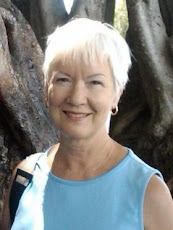

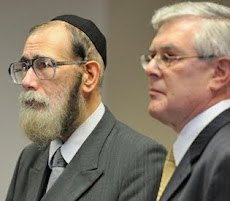

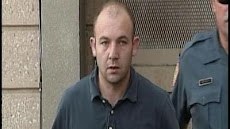









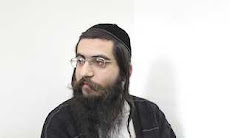





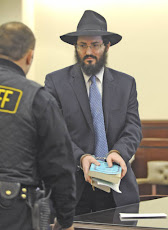














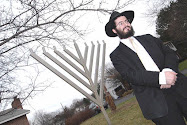




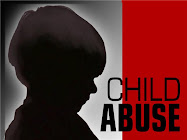













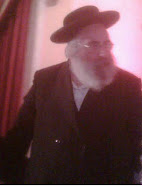



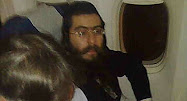




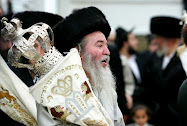


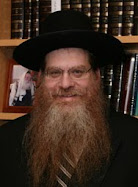












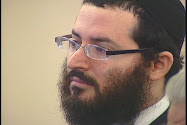
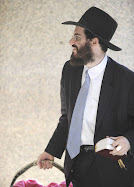
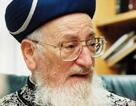









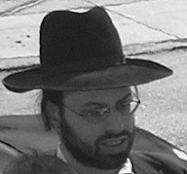











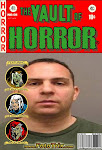












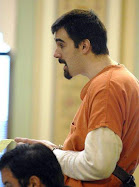


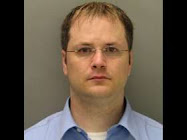


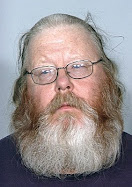

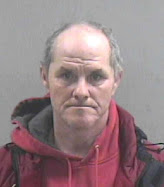
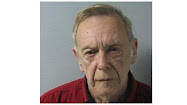
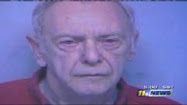













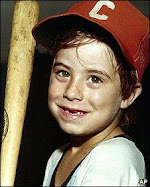

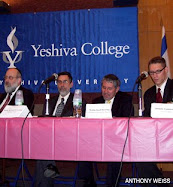

















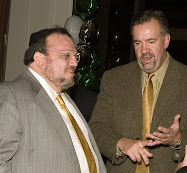
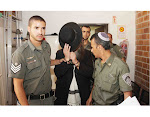



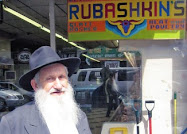















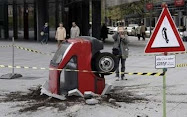










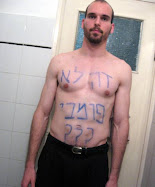
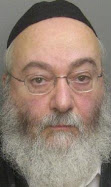












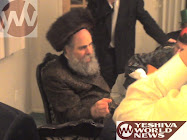






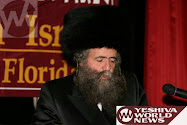


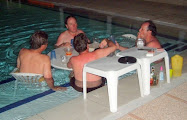

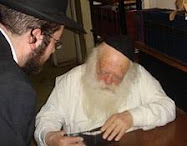

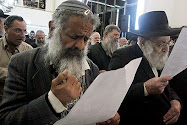
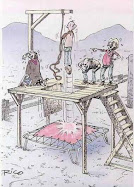




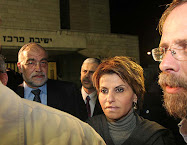
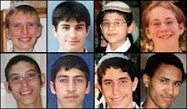
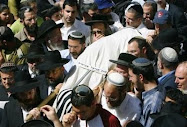
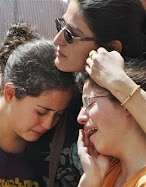
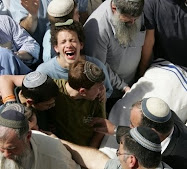
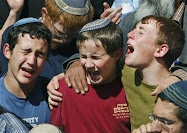
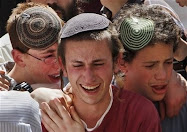










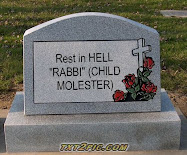








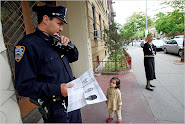















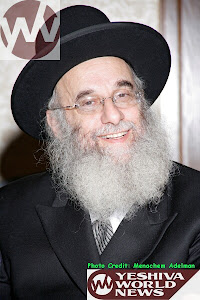
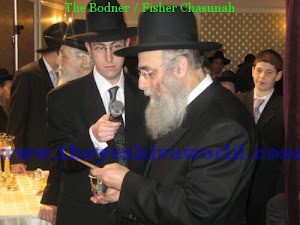
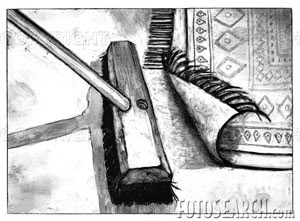
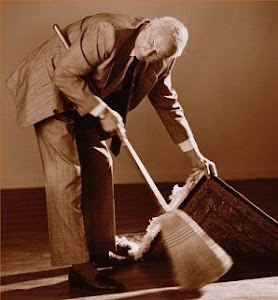











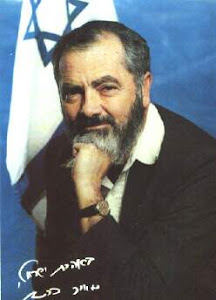

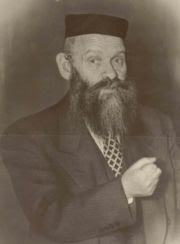




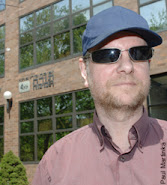


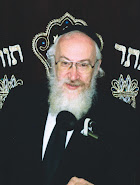





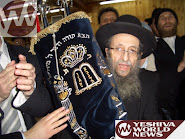



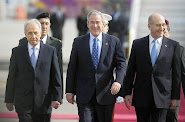
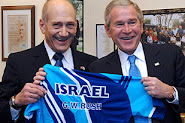
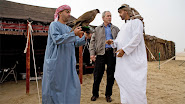


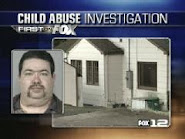
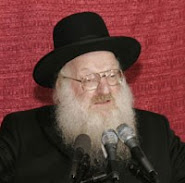

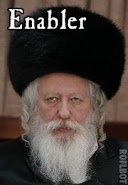













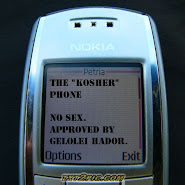





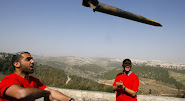
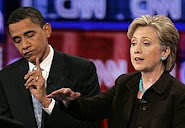


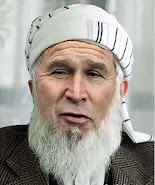









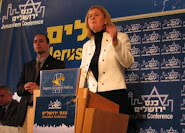


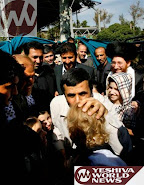
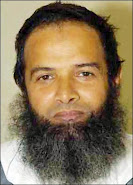


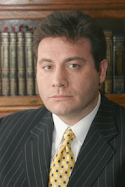


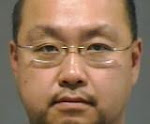
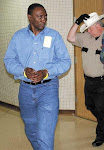

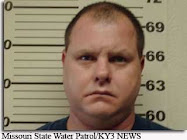



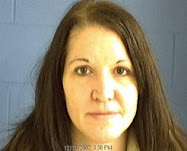


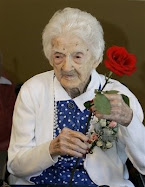

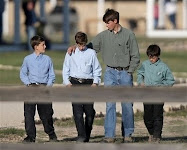



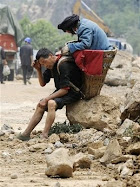





30 comments:
Another Priest Molester caught!
www.chicagotribune.com/news/local/chi-mcguire.1nov03,1,1416551.story
chicagotribune.com
Priest called serial molester
Convicted in Wisconsin, Jesuit faces federal counts
By Manya A. Brachear and Jeff Coen
Tribune staff reporters
November 3, 2007
A prominent Jesuit priest who traveled around the globe as a spiritual shepherd brought a teenage boy on at least one of his international trips and molested him repeatedly, federal authorities charged Friday.
Rev. Donald McGuire faced a judge in Dirksen Federal Courthouse on charges that he traveled to Switzerland and Austria in December 2000 to engage in sexual misconduct with a minor, who is now 21 and a college student.
But the affidavit against McGuire paints a portrait of a serial molester who targeted acolytes entrusted to his supervision. The accuser identified as Victim A told authorities McGuire sexually abused him from 1999 to 2003 in 12 states and six countries. His mother had sent him to live in Evanston with the priest, who had become a spiritual mentor to their troubled family.
The document also outlines inappropriate conduct with two other minors.
According to the affidavit, Victim A and another boy were abused after admitting to McGuire during the sacrament of confession that they masturbated. McGuire insisted on inspecting the boys' genitals with a magnifying glass and baby oil to make sure they had not harmed themselves, the affidavit said. The abuse escalated to include discussion of sexual topics, pornography, massages of the body and genitals, showers and oral sex, officials say.
The third man corroborated the claims of Victim A and also alleged McGuire showed him pornography.
Victims A and B had filed civil suits against McGuire and the Jesuit order; Victim C had not come forward publicly until now.
Correspondence between families and Jesuit leaders, released by lawyers this week, appears to reveal a trail of allegations against McGuire dating to 1969. But Illinois' statute of limitations prevented prosecution on decades-old claims of abuse.
McGuire, 77, was convicted last year in Wisconsin of molesting two students from Loyola Academy in Wilmette during trips near Lake Geneva in the 1960s; that state's statute of limitations does not apply to out-of-state residents.
McGuire's 7-year prison sentence was postponed pending an appeal, and McGuire had been permitted to live in a private Oak Lawn home until Wisconsin authorities jailed him Thursday for a third probation violation.
If convicted on the federal charges, McGuire faces up to 15 years in prison.
As former spiritual director for Mother Teresa, McGuire offered Roman Catholic retreats around the globe. The affidavit cited letters from Jesuit officials in the early 1990s repeatedly instructing McGuire to discontinue overnight trips with minors.
Kevin McGuire, the priest's nephew and an attorney representing two of the accusers in civil suits, said the criminal charges should bring a degree of closure to families involved.
"There's certainly vindication in the filing of criminal charges, given McGuire's influence and support extends across the country," he said.
-----------
mbrachear@tribune.com
jcoen@tribune.com
OU Kosher Senior Rabbi To Address Lima, Peru Conference
The worldwide nature of OU Kosher will be demonstrated once again on Thursday, November 8, when Rabbi Dr. Eliyahu Safran, senior rabbinic coordinator and vice-president of marketing and communications of the Orthodox Union Kashrut Division, will deliver a web presentation (webinar) to a conference on the organic and kosher foods market in the United States, being held in Lima, Peru.
The conference is sponsored by the American Chamber of Commerce of Peru (Amcham Peru) and will run two days, Wednesday, November 7–8. Rabbi Safran’s hour-long presentation will take place at 7:00 p.m. New York time. Ancham Peru—La Cámara de Comercio Americana del Perú—represents more than 500 Peruvian and foreign companies whose annual sales add up to approximately 60 percent of Peruvian GNP.
Speaking from the New York headquarters of OU Kosher, Rabbi Safran will discuss the opportunities open to Peruvian companies to export their products to the United States, and how kosher certification, particularly OU certification, expands the market considerably for imports.
The OU’s kosher certification mark is the world’s most recognized kosher symbol and can be found on more than 400,000 products manufactured in 80 countries around the globe. The OU considers Latin America to be a major growth area for certification, and emphasizes the rewards to companies that carry the OU symbol when they enter the booming U.S. kosher market.
“It was gratifying to receive Amcham Peru’s invitation to participate in their webinar, following the successful webinar presented by OU together with the Food Institute this past August,” Rabbi Safran explained. “Countries around the world are now able to hear and see the OU message via the modern technologies of teleconferencing and we are eager to respond to their requests and needs, particularly as they seek to learn the great advantages of OU certification in their quest to export.”
Rabbi Safran will deliver his webcast to Lima shortly after returning from London, where he will represent the Orthodox Union at the huge Fi (food ingredients) Europe Conference 2007. His topic is “The Growing Kosher Market,” which, Rabbi Safran emphasizes, will sound just as good in Peru as in England.
By:_ 5TJT Staff - 02/11/2007
Last update - 22:53 03/11/2007
The mystery of the murder in Lviv
By Tom Segev
On September 6, 1848, Rabbi Abraham Kohn and his family sat down to lunch in their home in the city of Lemberg, as it was then called - or, Lwow in Eastern Galicia, and Lviv in Ukraine, today. The rabbi, his wife Magdalena and four of their five children managed to swallow only one spoonful of the soup when they already felt a searing pain. The rabbi's wife went into the kitchen, because she thought the cook had put too much pepper in the soup. By the time she returned to the dining room, she saw her husband and the children writhing in pain; she quickly called a doctor, but he was able to save only the wife herself and three of the children. The rabbi died toward morning as did one of the girls, Teresa. A laboratory test determined that the rabbi and his daughter had died of arsenic poisoning; the police opened an investigation.
This is one of the most controversial stories in the history of the Jews in modern times, but not many people are familiar with it. Until recently Kohn's death was generally described as food poisoning. With the collapse of the communist regime, Ukraine also opened archives that were closed to researchers until now, which is how Michael Stanislawski of Columbia University managed to get his hands on the Kohn file. The American historian is almost certain that the rabbi was murdered and that his murderer was a Jewish goldsmith named Abraham Ber Pilpel. He managed to sneak into the rabbi's kitchen, he leaned over the stove pretending to light a cigar, and at the same time poured the poison into the pot of soup.
In a charming and fascinating book that he has just published - "Murder in Lemberg" (Princeton University Press) - Stanislawski says he truly believes that this is not only a fascinating story in and of itself, but also one with abiding importance to all those interested in the modern history and the culture of the Jews, with all of its grandeur and successes, as well as its abundance of tragedy and violence-including internal violence, ultimately stretching from the assassination of Rabbi Abraham Kohn in 1848 to that of prime minister Yitzhak Rabin in 1995.
Rabbi Kohn was 41 years old when he died; he had arrived in Lemberg about five years beforehand, and his troubles began immediately. Because Kohn was a maskil (an advocate of the Enlightenment); he was considered one of the first leaders of the Reform movement, and was known for his battle against the traditional dress of the Jews, including the black coat worn by men. He also was influenced by the spirit of the liberal revolution of 1848 that affected all of Europe. He demanded of the authorities that they cancel the tax on kosher meat and on candles, which the Jews were forced to pay. All of these things aroused the anger of the ultra-Orthodox - particularly two of them: Orenstein and Bernstein, very wealthy men who made their money from the tax-collection system, among other things.
It was a political assassination; Pilpel and several other suspects were put on trial, appealed and were acquitted. The minutes of the investigations and the trials reflect community agitation full of passions, political conspiracies and financial greed, all on the background of the changes brought about by the Spring of Nations in Europe. Stanislawski wants to extract a historical lesson from the affair: The ultra-Orthodox link themselves to conservative, and occasionally even reactionary, politics. Abraham Ber Pilpel is portrayed as the predecessor of Yigal Amir. But the ultra-Orthodox establishment in Israel did not always link itself to right-wing politics, and Yaakov Yisrael de Hahn, whom Stanislawski also mentions, was in fact murdered because he adopted political views that were more moderate than those of his secular murderers, members of the Labor movement.
In any case, Magdalena Kohn turned to the high court of the Austro-Hungarian Empire in Vienna and demanded that they rule that her husband's murderer acted under the influence of the rabbis who authorized him to assassinate a moser (informer). It was important to her to prove that Pilpel had not acted alone. She claimed that the leaders of the ultra-Orthodox Jews, Orenstein and Bernstein, had bribed the judges in the lower courts. Here is one woman who fought for her rights; a captivating story.
The widow's lawsuit was rejected. Stanislawski believes the heads of the ultra-Orthodox establishment considered Cohen a kofer (heretic) rather than a moser, and therefore it should not be assumed that they allowed him to be killed. There is no proof that the judges were bribed, but it is possible that Abraham Ber Pilpel acted as a hired assassin. Some people say he left his city, went to the Land of Israel and settled in Safed. Stanislawski is unable to confirm this rumor, and so here we have the basis for additional research, as serious historians like to say.
Here in Mapai
On February 24, 1952 a man named Y. Levin wrote a letter to the honored members of the central committee of Mapai (forerunner of the Labor Party): Y. Gouri, B.Z. Dinburg; Y. Smilansky; Y. Kesse, M. Kitron and Y. Sarid. And this is what he wrote: "At the meeting of the secretariat on Friday, February 22, 1952, you were appointed as a committee assigned to examine the nature of the organizational structure of the Ministry of Education and Culture. The opinion of the secretariat is that we must ensure that the key positions in the Ministry of Education not fall from the hands of party members. Moreover, you must respond to the demand of our member B.Z. Dinburg to begin working in the Ministry of Education. The coordination of the committee has been assigned to our member Yizhar Smilansky."
The document is preserved in the archive of Dinburg, later Benzion Dinur, the second education minister of the State of Israel, and was discovered recently in the central archive of the history of the Jewish people in Jerusalem. Yisrael Gouri, the chair of the Knesset Finance Committee, was the father of poet Haim Gouri; Yaakov Sarid was the father of Yossi Sarid; Y. Smilansky was the author S. Yizhar; Yona Kesse served several times as the secretary of Mapai; Moshe Kitron was among the party activists in Tel Aviv.
A history lesson
Two weeks ago, the following lines were published here: "After a long search, the burial place has been found of two Czech underground fighters who, in the summer of 1942, assassinated one of the masterminds behind the plan to annihilate European Jewry, Reinhard Heydrich. The two, Jan Kubis and Josef Gabcik, committed suicide before the Nazis could catch them, and were buried in unmarked graves in one of Prague's cemeteries. Not far from them is buried Karl Herman Frank, who came up with the Germans' revenge for Heydrich's murder: the destruction of the village of Lidice."
Antonin Hradilek, counselor for political affairs in the Embassy of the Czech Republic, found a series of errors in this passage. Only Jan Kubis was a Czech; Gabcik was a Slovak. The two were not underground fighters: They were serving in the Czechoslovakian army. The operation was an execution rather than an assassination, in accordance with the decision taken at the army headquarters in London; Kubis and Gabcik were parachuted from a plane that brought them from England for this purpose. On June 18, 1942 German forces located the hiding place of Kubis and Gabcik, and five other paratroopers in Prague. In a bloody battle that lasted for two hours Kubis was wounded and died in the ambulance on his way to the hospital. Gabcik did in fact shoot himself, with his last bullet.
It is hard to identify the two with certainty: Their heads were removed, they were placed in jars and were used by a German professor who disappeared from Prague at the end of the war, together with the jars. Rumor has it that the two heads may still be in the Anatomy Institute in Vienna.
"We didn't succeed in finding them," said the pedantic Czech diplomat, who also asked that another correction be made: The operation was not carried out in the summer, but on May 27; the summer begins only on June 21.
ZEEK
November 07
Rethinking Kashrut: An Interview with Rabbi Morris Allen
Rachel Barenblat
Rabbi Morris Allen is at the forefront of the hechsher tzedek movement, a grassroots effort to change the way Jews think about kashrut. The hechsher is a mark used to certify a food is kosher. Yet, Rabbi Allen found out that such a mark doesn’t guarantee the food’s making is fully in accord with Jewish laws and ethics. Born out of distress at the reported working conditions at Agriprocessors, the nation's largest kosher meat packing plant, hechsher tzedek is intended to be a way to ensure that the foods Jews eat are kosher not only ritually but also ethically.
As he tells the story, Rabbi Allen came to this work almost by accident. A congregational rabbi for twenty-two years, he had concentrated his social justice agenda on prison and immigration reform. Now, he has involved the entire Conservative movement in the hechsher tzedek project. By Allen's admission, they've got a tough row to hoe. At one end of the spectrum are Jews who argue that kashrut is the purview of the Orthodox and ought to stay that way. At the other are Jews who are more concerned with eating sustainably and locally than with the nature or presence of a hechsher in the first place.
It remains to be seen whether the hechsher tzedek becomes part of normative Jewish practice, or whether it stays on the fringes with its cousin eco-kashrut, which, while praised by its proponents, hasn't become widely-accepted. Then again, these days there's unprecedented interest nationwide in eating sustainably and healthfully, so who knows: Rabbi Morris Allen may have picked the perfect moment to let this idea fly. – RB
RB: What's your relationship with kashrut?
Rabbi Morris Allen
MA: I grew up in a home that was kosher, in the way in which families in the Sixties often were -- some members of the family ate treif outside the house (although, for what it's worth, they don't anymore!) My community here in the Twin Cities has promoted kashrut all along. Twelve years ago I embarked on a campaign called Chew by Choice. I wanted to begin to elevate people's understandings that, once you enter into the discussion, you're on the path. Giving up pork or shellfish, for example, is already a way of recognizing the role kashrut plays in the Jewish people's lives.
My approach has always been that kashrut needs to be livable. For people who are neurotic, and Jews certainly qualify, this can really become a crazymaking enterprise! Kashrut needs to be an understanding that in fulfilling this act of eating, I'm bringing God fully into my life. In recent years we've seen kashrut essentially be hijacked by people who are much more concerned about infinitesimally small bugs living on broccoli than about the purpose of the rules in the first place, and that's not how it's supposed to be.
I've been a vegetarian since 1974. My vegetarianism is a result of my commitment to kashrut.
RB: So it's kind of funny that you've become so involved in matters of kosher meat.
AM: How it happened was, in January of 2006, after our kosher butcher in St. Paul had closed, the Lubavitch rabbi in town asked me to work with him to bring fresh kosher meat back to St. Paul.
In March of 2006, I made my first visit to Agriprocessors to talk about bringing kosher meat to the Twin Cities. Shalom Mordechai Rubashkin was very lovely to me; I remember he said he didn't understand why the Conservative movement wasn't a bigger customer. I said 'sure, fine, we'll work on that!' We started bringing their kosher meat into the Twin Cities market.
And then in May of 2006 Nathaniel Popper did an investigative piece on worker treatment at Agri, and printed it in the Forward.
I was personally embarrassed. I had staked my local rabbinate on working effectively with Agriprocessors, and I was aghast to read this article! I went to the Chabad rabbi and said, “We have to do something!” That was Friday of Memorial Day weekend. On Sunday he went down to Agriprocessors, and he investigated, and he came back and wrote a report saying he had no idea what Nathaniel Popper was talking about, everything was beautiful, the people were happy, they were singing as they worked, and so forth. But I wanted to put together a group of Conservative leaders to go in and make our own determination.
Five of us, representatives from United Synagogue and the Rabbinical Assembly, spent the summer of 2006 making numerous calls, interviewing people directly and indirectly related to Agriprocessors, including people in Senator Harkins' office, clergy, and so on. In August 2006, we went to Postville for a visit, and it was pretty fascinating. Initially we proposed three major undertakings which, if Agriprocessors would agree, would indicate a sincere desire to address our concerns. We promised them that we would keep our report out of the press in that event. We didn't want to be party to a world in which one Jew exposes another Jew, you know? It didn't seem necessary. We felt that if they would take these three steps, that would demonstrate good faith on their part to clean up their behavior.
A still from the undercover video made by PETA of Agriprocessors' operations.
RB: But they didn't.
MA: No. We did not hear back from them by the deadline we'd set. It was at that point we realized this was not an issue stemming from one producer of kosher food, but something much deeper.It's a matter of paying attention to all of the ethical demands upon labor laws that are present in Jewish law -- how employers are to treat employees, what kind of safety issues have to be addressed. We read in Torah, for instance, about building a parapet on a house so people don't fall off! In what we build, we have to make sure it's safe for people to be present. Ethics are woven into the fabric of Torah. So we batted around the idea of what we called a hechsher tzedek.
It would be great, we said, if we could be assured that food products that met the standards of kashrut also met the standards of the ethical mitzvot that are incumbent upon us. We need to think in terms of mitzvot bein adam l'chavero [between one human and another] as well as bein adam l'makom [between a person and the Creator]. We should not be eating food that has been produced in a way that has denied the dignity of the labor! We should not be more concerned about the smoothness of a cow's lung than we are about the safety of a worker's hand.
At the end of 2006, the RA and the United Synagogue national board gave us six months to see whether these standards were feasible, and lo and behold, they are. We're reviewing our first set of verifiable objective standards, produced for us by a company in Boston that does market evaluation for social justice mutual funds. That's the meat, as it were, of what we're doing now. Those standards address the six areas Jewish law is concerned about in production of kosher food over and above the laws of kashrut.
RB: And those are...?
MA: Wages/benefits, health/safety, training, corporate integrity, animal welfare where appropriate, and environmental impact.
So we're in the process of reviewing these standards, vetting them through classic Jewish law. The next stages are to talk with industry about this -- how do we move this forward in practical terms? There are some serious issues still to address, but the reality has been that the response in the Jewish community and in the non-Jewish community has been beautiful. The depth of who we are as a people is exposed by this issue.
RB: It sounds to me like there's some overlap between eco-kashrut and hechsher tzedek. I think many Jews today feel the need to choose between eating in a way that fits traditional Jewish dietary practice, and a way that fits their environmental and social values (organic/sustainable food, perhaps belonging to a community-supported farm, etc.) Do you think that binary distinction is valid, and does hechsher tzedek offer a way around the binary?
Proposed logo for the Hechsher
MA: I want to be working beyond the binary. That's exactly the issue. That's the reason hechsher tzedek has to exist.
I was teaching about this at Camp Ramah Wisconsin this summer -- they took their kids on a trip to Postville [where Agriprocessors is located], and I was there to prepare the kids for what they might see. Someone raised their hand and said, 'so rabbi, you're saying it would be just as good (because it's also Jewish law) to eat food prepared in an ethical way as it is to eat food with a kosher sticker!' And I said, that kind of bifurcation is the issue -- we shouldn't have to decide between one of these or the other.
We need to be in a world where we can say that keeping kosher is the way in which I demonstrate not only a concern for my relationship to God and Torah but the Jewish concern for our relationship to the world in which we live. That's what I really want to get across to people.
In 23 years of my rabbinate I've had a lot of crazy ideas! But this has really become a passion for me, it's central. I mean, here is such a classic opportunity -- this is so obvious that we've overlooked it until now. This is the melding of ritual and ethical law.
Think about the haftarah for Yom Kippur, for instance. Isaiah: 'Is this the fast that I have chosen?' It's not about the fast, it's aout unshackling the enslaved. But at the end, Isaiah says, 'and you've gotta observe Shabbos.' You can't just do one or the other.
For so long there have been wonderful Jews concerned about one or the other of these. This is the project where they meet. It's the classic opportunity to see that Judaism isn't either ritual or ethical, but the union of both. Ethical and ritual meet on our tables. The table for us as Jews has taken the place of --
RB: It's our mikdash me'at, our "little sanctuary."
MA: Right, it takes the place of the altar! Where we have this opportunity to demonstrate that at our core, the totality of Jewish life is understood. When the Temple fell we didn't put altars in our synagogues. The home table becomes the altar.
RB: Thank you.
Rachel Barenblat is a Contributing Editor to Zeek.
ZEEK logo © 2006 by Zeek Magazine and the author. This article may not be distributed for commercial purposes without the express written permission of Zeek Magazine (zeek@zeek.net). Reprints and other distributions must contain this copyright notice.
This entry can be found online at: http://www.zeek.net/711kashrut/
POLICE NABBED SUSPECT
Reward money for crime info unclaimed
Posted by the Asbury Park Press on 11/4/07
BY MARGARET F. BONAFIDE
STAFF WRITER
LAKEWOOD — The Vaad, a group of Orthodox Jewish leaders, will rely on the Police Department in determining who should receive two rewards offered for the arrest and conviction of individuals involved in crimes against members of the Orthodox community, said Rabbi Moshe Zev Weisberg.
The Vaad offered a $50,000 reward for information leading to the arrest and conviction of the person responsible for the attack on a 20-year-old Lakewood woman who was abducted, raped, robbed and then returned to her place of capture in May 2006.
Brandon Fritz, 22, of Delaware Trail, here, pleaded guilty Thursday to crimes related to the Lakewood incident and also in an Old Bridge incident in which a 48-year-old woman foiled an attack by Fritz, which led to his arrest.
Weisberg said no one had come forward to claim the $50,000 reward offered by the Vaad in the abduction case. He said it was the police who connected the information of the Old Bridge attack and the Lakewood attack and arrested Fritz as a result. Law enforcement agencies are not entitled to collect reward money, Weisberg explained.
Weisberg said the Old Bridge woman called police to provide information about the attack on her because of her attack, and not to inform police it was the suspect in the Lakewood attack who attacked her also.
"The reward was specific for the crime in Lakewood, and it was a police officer who connected the dots," Weisberg said.
"We are grateful to police and we are grateful for citizens who come forward without money" being offered, Weisberg said. "But if the community feels under siege, we offer reward money for people who don't want to get involved."
"If someone feels they have a legitimate claim on the reward . . . we are not trying to shy away from it," he said.
The Vaad and members of the Orthodox community donated $20,000, which was combined with the Anti-Defamation League donation of $5,000, for the $25,000 reward offered for information leading to the arrest and conviction of the person responsible for the baseball-bat attack on Rabbi Mordechai Moskowitz, 53, on Princeton Avenue on Oct. 9 while walking to synagogue.
On Oct. 24, Lee Tucker, 37, of Ventura Drive was arrested and charged with attempted murder, possession of a weapon for an unlawful purpose and unlawful possession of a weapon in connection with the attack.
Detective Lt. Joseph Isnardi said the Police Department is not involved with the reward at all and prefers that any reward be held in abeyance until after the adjudication of Tucker's case.
Moskowitz is a third-grade teacher at Lakewood Cheder School.
Margaret F. Bonafide: (732) 682-4038 or bonafide@app.com
http://www.nydailynews.com/sports/baseball/2007/11/04/2007-11-04_joe_torres_foundation_still_a_haven_for_.html
Joe Torre's foundation still a haven for abused kids
By WAYNE COFFEY
DAILY NEWS SPORTS WRITER
Sunday, November 4th 2007, 4:00 AM
Joe Torre's Safe at Home Foundation has been a haven for children and has seen contributions from the likes of
former mayor Rudy Giuliani ...
former and current Yankees, like Derek Jeter (l.) and Tino Martinez
... and comedian Billy Crystal.
BY Wayne Coffey
Joe Torre knows how to throw a gala. His 5th annual Safe At Home Foundation soiree - to be held this Thursday at Chelsea Piers - will be hosted by Billy Crystal and include a guest performance by Bruce Springsteen. It's expected to raise more than $2 million for the cause - and won't be impacted in the least by the fact that Torre's new dugout is 3,000 miles away, according to Andrew Dover, CEO of Joe Torre Safe At Home Foundation.
"Since Day One, Joe and Ali recognized domestic abuse as a major problem impacting every community in our country," Dover says. "They would like to have a Margaret's Place in every school in every city in the country. The foundation started in New York but our plans all along have been to have a nationwide program making sure every child is safe at home."
According to Safe At Home's IRS filings for 2006, more than 80% of the foundation's $2.5 million in expenses went to its programs, while 7% went to administrative costs. Sandra Miniutti, a VP for Charity Navigator, an independent charity evaluator, says that her organization looks for a nonprofit to allocate at least 75% of expenses to its programs.
"We haven't officially rated this foundation, but with 80% of its funds going to programming that is a strong indication it is being well run," Miniutti says.
(The names of the children in this story - and in some cases their ages and communities - have been changed in order to safeguard their identity.)
Cecily is 12 years old, and in a world of pain. She has dark, distant eyes and holes in the knees of her blue jeans. She is sitting in an overstuffed blue chair and she's crying, but at least she is here and talking about it. And at least she is safe. That's the best part of all. She is safe.
Nobody is punching anyone here. Nobody is screaming or throwing things. Her father isn't pummeling her mother and her mother isn't pummeling her, and nobody is forcing her to kneel on a cheese grater - which is what happens at home.
When Cecily comes into this room, into Margaret's Place, every single school day, to talk to her counselor, it's the one place where she knows everything is going to be okay. She can speak freely about how she feels, and begin to deal with the guilt and shame and fear that sometimes feel as though they are hitting her with the force of a tsunami.
"So many children who live with domestic violence don't feel they deserve to be taken care of and protected, and loved in a healthy way," says Dinorah Manago. "That's the first goal of what we do: get them to feel they do deserve to be taken care of and loved."
Manago is the program coordinator of Margaret's Place at the Emerson Middle School in Yonkers. Hers is one of the 10 Margaret's Places that are operating in the tri-state area, all of them school-based sanctuaries that are the core of the Joe Torre Safe at Home Foundation, which was launched five years ago by Torre and his wife, Ali, with an aim toward ending the vicious cycle of domestic violence. Torre knows about the problem first-hand, having grown up in a violent home in Marine Park, Brooklyn, and offers a chilling testimony about what it was like on his Web site. He speaks of his fear and hurt, and the sense of worthlessness he carried with him like some private scarlet W far into his adult life - a sorry signature of many domestic-violence victims, who often suffer in silence, terrified of sharing the depth of their torment.
Ever since Torre's storied run as New York Yankee manager ended unceremoniously last month, there has been wide discussion about the body of his work - his four world championships and 12 straight postseason berths, and his standing as an avuncular civic treasure, the unofficial pope of New York. As he readies himself to switch coasts and take over the Dodgers, Torre's most enduring legacy may have less to do with banners hoisted than with lives saved, and children comforted; with the work done in Margaret's Place - named in memory of Joe's mother, who spent the bulk of her married life living beneath the harsh hand and terrible tirades of her husband, a New York City detective.
Torre may no longer be at the helm of the Steinbrenner family business, but that makes him no less a hero to those on the front lines of the battle against domestic violence - a problem that affects more than 32 million Americans annually, resulting in nearly 2 million injuries and approximately 1,500 deaths, according to Safe Horizon, the world's largest provider of services to victims of domestic abuse, and an organization that partners with Safe At Home.
It is a problem that afflicts one in four women at some point in their lives, according to research by the National Center Against Domestic Violence.
"For such a large public figure like Joe Torre to come out and talk about the issue of domestic abuse and attach his name to the cause does wonders to reduce the stigma and sends a strong message to kids that they have nothing to feel guilty or ashamed about," Manago says. "He's really using his celebrity to change kids' lives."
* * *
Margaret's Place at Emerson Middle School in Yonkers is in the middle of the corridor on the first floor, just past the main office, behind a weathered wooden door and a colorful sign, and a little placard with the word "peace." Painted on the wall next to the door is a mailbox covered with baseballs. Ninety percent of the students at Emerson live below the poverty line, though Amira Martin, a social worker for Westchester Jewish Community Services and program director of the four Margaret's Places in Westchester, is quick to point out that domestic violence is a problem "that cuts across all social strata and socioeconomic groups." Big incomes and houses to match offer no immunity. The room used to be a faculty lounge before the program was launched 15 months ago. There is a sign-up sheet on Dinorah Manago's desk that includes this entry: Anger inside Need someone to talk 2.
Anger, indeed, is an extremely common emotion among children who live with violence in their homes. The whole idea is not to take the anger away, but to offer a healthy way to channel it.
Like all Margaret's Places, the Emerson program has two underlying aims: violence prevention, and trauma intervention. Through everything from creativity contests to art projects to assembly programs, efforts are made to teach children about healthy and unhealthy relationships, and the different forms that abuse can take, from the subtle (harassing text messages) to the overt (bullying and threatening.)
To commemorate Domestic Violence Awareness Month last month, Manago had students write poems and pieces about healthy respect and healthy love, the top entries being read on the morning announcements. With studies showing that one in four teenagers is involved in some form of an abusive relationship, the urgency of the issue couldn't be clearer, says Lori Donaudy of Smithtown, L.I., Mrs. New York 2007 and a survivor of domestic violence. Donaudy is a frequent speaker on the subject of domestic violence, and visited Emerson Middle School last year.
"If we don't do something to address (the prevalence of unhealthy teenage relationships), we're going to continue to breed domestically violent marriages," Donaudy says.
Still, those in most acute need of help are the children who are living with abuse and its immediate aftershocks. Tony came to Margaret's Place in 11th grade, after his mother died of cancer, and after he saw her beaten so badly by his stepfather that Tony thought she was dead. Tony was a young boy at the time. Stricken with fear, he hid in the closet until the beating was over. He never told his mother he was sorry. He has lived with the guilt ever since.
"There is a lot of secrecy and a lot of shame that surround the issue of domestic abuse," says Christian Burgess, the director of school programming for Safe Horizon. "The child who lives with domestic violence feels that if they speak about it it will only get worse."
Torre knows all about that, suffering in private for decades, only beginning to get in touch with his buried demons while he and Ali were on a self-awareness retreat a dozen years ago. Before the weekend was done, Torre was crying in front of a room full of strangers, unburdening himself of all of his horrible family baggage, opening up about his fear of confrontation and loud noises, and deep-seated sense of inadequacy.
As he said some years later, "It's important that you realize you aren't alone. And that there's nothing you could possibly have done to cause your dad to be mean to your mom."
* * *
More than 1,600 individual counseling sessions were held in Margaret's Place rooms last year. Several thousand more students were reached in group counseling sessions. Nobody pretends that there aren't tens of thousands more children who need comfort and protection. Just last week, a teenage girl and her mother came in to see a counselor to talk about the girl's thoughts of suicide. The girl had grown up seeing her mother beaten by her father. At 12 the girl was raped by a family member. "Violence and obsessive love is all that so many of these children ever see, all they ever know," Dinorah Manago says.
There aren't miracles in the business of helping the children of domestic violence. You just hope you can create a safe place for kids to come forward, to talk, and then you do the work, gaining their trust and trying to help them see that it isn't their fault and that the shame and pain are widely shared, that so many others have had the same feelings and have been able to create a better life, a new way. Tony, the boy who hid in the closet, is doing better these days, according to his counselor, as he begins to understand that the violence was not anything he could've stopped, to identify positive adults in his life, and grapple with the idea that the man who beat his mother could also be an affectionate father to the boy's siblings. The more he has been able to integrate these things, the more he has become free to open up, and feel better about himself. Tony has become a Margaret's Place peer leader, attending group sessions even as he continues to do his own work.
Cecily, the dark-eyed, 12-year-old, has also made progress. Once consumed with rage, she has become less confrontational with peers and teachers, more able to consider the consequences of her actions. She has forged some healthy friendships, and seems to get stronger every time she is able to talk about her home life. She hasn't let go of all of her guilt, and still struggles with the notion that she doesn't deserve to live this way. She is living in a foster home, and hasn't seen brutality or been forced to kneel on a cheese grater for awhile. Her life is slowly, fitfully getting better.
Where there once was only hopelessness, there is now a glimmer of hope for Cecily. Behind her desk in Margaret's Place at Emerson Middle School, Dinorah Manago says that is Joe Torre's greatest legacy of all.
"He believes in this foundation, and what it can do for young people," Dinorah Manago says.
http://www.thejewishweek.com/viewArticle/c36_a672/News/New_York.html
No Religious Haven From Abuse
New study finds Orthodox women are sexually victimized as much as other American women are.
by Debra Nussbaum Cohen
Staff Writer
Despite the widespread impression in the Orthodox world that sexual abuse doesn’t happen within its precincts, or happens less than in the “outside world,” a report in the November issue of the journal of the American Psychiatric Association says that Orthodox Jewish women suffer as much of it as other American women do.
Twenty-six percent of respondents in a study about the sexual lives and attitudes of married Orthodox Jewish women — 55 percent identifying as Modern Orthodox and about 45 percent as fervently Orthodox — indicated that they had at some point suffered sexual abuse.
That figure is on par with the 25 percent to 27 percent of American women in general, without regard to their marital status or religion, who have reported
in numerous studies that they had been sexually abused.
The new article also says that fervently Orthodox women are more likely than Modern Orthodox women to have experienced sexual abuse, to have experienced it multiple times and to have experienced it the first time before age 13.
Fifty-eight percent of fervently Orthodox women who participated in the study reported experiencing sexual abuse multiple times, according to the article, compared to 39 percent of Modern Orthodox women.
Overall, 16 percent of respondents said they experienced their first sexual abuse at or before they were 13 years old, which is less than the approximately 22 percent of American women who have reported in other studies that they were sexually abused at that age.
Among the ultra-Orthodox respondents, 20 percent said they had experienced abuse by the age of 13, while among the modern Orthodox respondents it was 12 percent.
“It’s very important to note that this is just a slice,” said Rachel Yehuda, a professor of psychiatry at Mt. Sinai Medical Center in Manhattan, and one of the paper’s lead authors. “We only studied married women who agreed to be studied, and we have no idea of how representative these women are. More importantly, we didn’t study single women or women who decided not to be Orthodox anymore.
“Nonetheless, the observation that this is not less of a problem here is important. ... One can’t walk away saying Orthodox Judaism is protecting women against abuse,” said
More women who became religious — ba’alei teshuvas — also report having been sexually abused at some point compared to those raised in Orthodox homes, according to the study of married observant women.
“We’re not the first to show that heightened religiosity may be a response to trauma,” says Dr. Michelle Friedman, a psychiatrist in Manhattan who is the article’s other lead author. Living an Orthodox life is viewed as “a whole lifestyle of perceived protection and meaning, of clarity and order.”
The article, which focuses just on sexual abuse, is based on information drawn from a broader study of Orthodox married women’s sexual lives and attitudes that Friedman and Yehuda conducted about four years ago. Respondents ranged in age from 19 to 58, and were required to report regular use of a mikveh, or ritual bath, in order to be included in the findings.
This was the first study of observant Jewish women’s sexuality, said Friedman. Though face-to-face interviews with randomly selected people on such topics are preferable, even getting Orthodox women to fill out anonymous questionnaires “is a hard thing to do,” she said. “You have to get to the sample, and it requires trust. For them to answer something that’s a study, people have to believe that it’s useful for them, that it’s necessary.”
The researchers advertised the study in synagogue bulletins, Jewish organizations, newspapers, Jewish listservs and Web sites, and through medical offices, like pediatricians and obstetricians/gynecologists, whose practices include many Orthodox women.
They did not count as abused respondents those who said that their adult experiences had been consensual even if uncomfortable, or said that they had abuse threatened but not carried out, or who experienced something that might not be strictly considered abuse, for example, someone who reported that a stranger fondled her rear end on the street.
Of the 380 respondents, 208 of them defined themselves as Modern Orthodox and 172 described themselves as ultra-Orthodox.
The study found that the ultra-Orthodox women were more likely to report that their husbands had forced them to have sex — 5 percent compared to 1 percent of the Modern Orthodox women.
This could be in part because fervently Orthodox women sometimes view their sexual role differently than Modern Orthodox women do, says Bronya Shaffer. Shaffer teaches marriage education classes to brides, and provides counseling to women about marital and family issues.
Shaffer, who is a member of the Lubavitch community in Crown Heights, has also had clients from the Williamsburg, Borough Park and Monsey chasidic communities, and found that “all of them were extremely sheltered up until marriage. They really had no clue about men and women or about how babies are made. All of them went into marriage knowing that part of their responsibility was to defer to their husband’s sexual needs, and none of them had any sense of themselves as sexual beings,” she said.
The article hopes to illuminate the need for greater sensitivity to sexual abuse among those who might treat its victims, and also to the reality of its existence in Orthodox Jewish communities.
“Religious life is not necessarily protective of the human condition,” said Friedman. “In theory, it’s clearly forbidden. But in practice it happens, and people suffer.”
I believe in techiyat hameitim. What I would say to all the victims of abuse who committed suicide is this: Why would I comment on someone who's now deceased?
After Kolko's arrest I thought I was being slick. Instead I showed the world that I am the biggest coward/nitwit/scumbag to pollute 42 Broadway.
"Why would we have comment about the arrest of an individual? Because he was an employee, more than 30 years ago, of one of the camps we run (that have had thousands of employees over the years)? I don’t think that requires comment on our part.
We are not even a party anymore to any lawsuit filed against the accused, as I understand it. The suit of the accuser who included Camp Agudah in his action (John Doe #1) has been dismissed (without prejudice, I believe, so it can still be refiled, but hasn’t been)."
THIS IS GOOD NEWS FOR ABUSE SURVIVORS IN NEW YORK STATE, AND BAD NEWS FOR YESHIVA'S AND RABBINICAL AUTHORITIES WHO ENGAGED IN A CRIMINAL COVER UP OF THE ABUSE.
newsday.com/news/local/longisland/ny-liprie1103,0,3942685.story?coll=ny_home_rail_headlines
Newsday.com
Advocacy groups slam bishop on sex-abuse bill
BY EDEN LAIKIN
eden.laikin@newsday.com
9:33 PM EDT, November 2, 2007
Members of two local advocacy groups have protested against Bishop William Murphy for using the pulpit to speak out against legislation that would give victims of childhood sexual abuse more time to file lawsuits and seek criminal prosecution.
Despite the fact the bill has been stalled in the State Legislature for three years, the two groups said that during the annual Red Mass in Suffolk County -- for members of the legal profession last month -- Murphy questioned whether legislation that would extend the criminal and civil statutes of limitation was intended "to profit lawyers more than victims."
The bill would extend the criminal statute in child sex abuse cases by five years, giving the victim until the age of 28 to report the crime to law enforcement. It would also open a one-year window for past victims to file civil lawsuits.
Sean Dolan, a spokesman for the Diocese of Rockville Centre, said the legislation should protect children from harm, but doesn't.
Dolan said Murphy backs extending the criminal but not the civil statute of limitations. Dolan called the bill "bad policy because it's impossible for any organization to defend itself against a claim arising from events 50, 60 and 70 years ago."
Dolan added that a similar law passed in California in 2002 forced the Archdiocese of Los Angeles to pay close to $1 billion in settlements of hundreds of lawsuits.
"The church was forced to settle these claims by selling church properties," he said. "If something like that happened here in New York, the effects would be catastrophic."
At a demonstration Thursday night, about two dozen members of Voice of the Faithful -- wearing red for solidarity and joined by members of Survivors Network of Those Abused by Priests -- stood outside St. Joseph's Roman Catholic Church in Garden City, distributing leaflets to parishioners that criticized Murphy for his opposition to the bill.
"He was mixing church and state in a house of God," said Janique Polimine, 41, of Holbrook, who says she was abused by a priest in 1980 and has a pending civil lawsuit against the diocese. "It was difficult to digest."
Dick Regan, 64, who said he and several siblings were abused by a priest in the 1950s in the Rockville Centre Diocese, asked of Murphy: "Is this the way Jesus Christ would respond?"
Regan, who added that he drove six hours from his upstate New York home near Rochester to support the group, said "I think the bishop is a hypocrite."
The legislation, introduced by Assemb. Marge Markey (D-Queens), has passed the Assembly. It has stalled in the Senate and was backed this year by state Sen. Stephen Saland (R-Poughkeepsie).
Tim Echausse, director of SNAP on Long Island, said the legislation is needed and would cover all victims of sexual abuse. "It would bring healing to the past victims and protect, sadly, the future victims," he said.
Israeli rabbis warn Bush of disaster if Annapolis not canceled
JPost.com Staff , THE JERUSALEM POST Nov. 5, 2007
A group of rabbis from Israel have sent a letter to US President George W. Bush warning him that if the planned Annapolis Middle East parley is not cancelled, a disaster will befall US citizens, just as Hurricane Katrina decimated New Orleans after Israel's disengagement from the Gaza Strip in August 2005.
Among the rabbis who signed the letter were Kiryat Arba-Hebron Chief Rabbi Dov Lior, Chabad Rabbi Meir Druckman of Kiryat Motzkin, and Rabbi Dov Wolfa.
Now this is a topic I love talking about. I don't care about female circumcision, but I am fascinated by male circumcision. In fact, I was trying to explain it to the boys at YTT and Camp Agudah for years. I like using the "hands on approach" to demonstrate. Perhaps, Avi Shafran can arrange a news conference and write an article about it.
allAfrica.com
Posted to the web 1 November 2007
By Yetunde Arebi
Hi, the issue of female circumcision, also known as Female Genital Mutilation, is a contemporary topic that seems to cut across race and creed. Over the years, the issue of female circumcision has become a growing concern among women and gender groups.The reasons for, and problems arising from, the practice has taken the front burner, such that a young lady, a few years ago, sought asylum in the U.K to prevent being circumcised.
From medical to physiological and emotional trauma, anti-female circumcision campaigners have called for legal backing to the banning of the practice.
Their efforts have yielded much positive change, to the extent that some state governments, like Ebonyi, have promulgated laws protecting the rights of women in this and some other crucial issues.
But, perhaps, due to ignorance and an attempt to hold on to our cultural practices and heritage, a lot of people, such as my neighbour who invited me to party with her over the successful circumcision of her 13-year-old daughter, still believe that female circumcision is the only way that the society can curb the excesses of its females. In an attempt to determine the level of awareness and attitude of Nigerian people about female circumcision, we spoke with respondents cutting across gender and ethnic groups. And did we have something explosive to give you!
We also published an extract from a book titled:Female Circumcision in Nigeria: Myth, Reality and Theatre, written by Juliana Okoh of the University of Port Harcourt. The book, indeed, shed great light on the issue, the various types available and the effect on the victims. For further details on Juliana's work, you may reach her on GSM number 08036707760 or e-mail her on
In the typical Human Angle style, reactions from readers have since been pouring in. So, beginning from today, you get a chance to read what they have to say about it.
Dear readers, please do note that since the issue is a contemporary one, you still have the opportunity to air your own views/opinion/contributions, if you have any. Our address remains: The Human Angle,Vanguard Newspapers, P.M.B. 1007, Apapa,Lagos. Our e-mail address is:
Please feel free to also send in any story of your choice, but based on a true life experience. Happy reading!!
Dear Yetunde,
Male or female circumcision is the practice of surgically modifying the private part of the human being. This practice, in one form or the other, exists in many parts of the world, not least of all in Africa, and in particular, Nigeria. Female circumcision is negatively referred to as female genital mutilation. It is difficult to understand why male circumcision is not referred to in the same way. Some insight into this is necessary.
Most of us may not realise that male circumcision is NOT common in many parts of the world, particularly in the Western world. It may come as a shock to many to find that the average European man is uncircumcised. In fact, the hospitals in the UK, US and most other Western countries do not perform circumcision. It is considered an outdated religious practice. Should you require it for, say, a baby boy, you would have to seek out a Jewish rabbi or some other practitioners to have it done. The Jews are the only white group with a history of circumcision.
It must, therefore, be understood that the issue of circumcision, whether for male or for female, is completely outside the cultural practices (or understanding) of the Western world. They neither understand nor accept the practice. They are, therefore, not qualified to determine the expediency of the practice. Male circumcision is simply tolerated because the Bible speaks about it. Otherwise, we would have been faced with Western media onslaughts accompanied by local "let's get civilised" civil rights, NGO and other groups, trying to convince us that male circumcision is primitive, barbaric, reduces male sexuality, scars the organ and causes untold pain and suffering to the baby. That it risks permanent deformation and disability to the baby, or death through fatal infection. It is, therefore, totally unjustified and unjustifiable.
Our ancestors could even have been accused of circumcising to prevent male promiscuity! Statistics would be provided to show that uncircumcised men are more virile, and more fertile than the circumcised ones. Parents would be accused of violating the rights of their baby boys. Imagine then, the difficulty of trying to convince our "been-to" and Western-oriented elites that male circumcision representing hundreds of years of ancestral practice should only be changed with caution if at all, and then only when it is OBVIOUS to the people that the practice is dangerous, and has become unnecessary, having been overtaken by practices generally considered more advantageous to the people as a whole. Imagine a situation where there was a British or American law against male circumcision. Thank God for the Bible.
Some would say that female circumcision is not in the Bible but neither is wine-carrying, or church weddings - that does not make it wrong. Female circumcision is not synonymous with VVF as many groups have fraudulently implied. And the general conception that it is performed to reduce female sexual pleasure has been manipulated to inflame gender rights emotions. This was effectively shown a few years back in Lagos when, on an Igbo phone-in program, the presenter asked people to call in and air their views on the issue of female circumcision. The responses were enlightening. Not only were all the callers female and circumcised, each and every one of them insisted that she has or will circumcise any daughter of hers. None believed that her circumcision had affected her negatively, and all considered it a practice worth retaining.
The impression I got was that it was mainly the uncircumcised (and many opportunistic NGOs) that had a grouse with the practice. My reflection on the issue led me to wonder -- what would the Western advocates of human rights abuse think of this? Whether right or wrong, the facts remain. Like the response of the nurse shows, many girls have a clitoris which extends outside the vagina. Discussions with these girls will tell you that for such people, even the simple act of walking can be a serious turn-on. In this situation, how can anyone say that a well-performed circumcision will not be morally beneficial to the girl?
A critic may insist that this is the same as trying to stop promiscuity. If a mother helping her girl to manage sexual excesses as stated above is wrong, then taking her to a doctor to correct a malformed leg could also be wrong. Depending on your viewpoint (Western or Traditional) female circumcision may or may not be expedient at this point in our national development, but for God's sake, let us stop the foolishness of presuming that our ancestors were idiots who did things without reason, and who enjoyed the pain of the screaming baby. Mean old men who approved a practice fraught with risks for the baby and its parents (to whom the baby was considered precious). Thinking so would be the height of colonialism.
As the practice carries a risk of infection, deformation, bad scarring and other problems due to the way it is presently being handled, we can have qualified medical practitioners perform it as is done for males. We are then left with the matter of its social expediency.
At this point, I would advice that the choice remains with the parents until such a time when the practice is well researched and understood without Western bias by our own people, and in our own environment. I say this because I find that most NGO discussions refer to the worst forms of the practice, usually based on information from other parts of the world. Many parts of the world definitely perform circumcision very differently, both in content and in context. For some, it is just token, while for others, it is major surgery. Using inapplicable or exaggerated examples give rise to serious misinformation, with its attendant error of judgment. Is it right to throw away everything? The baby with the bath water? There are as many arguments for male circumcision as against it (Europeans and Moslems will tell you), and so it is for female circumcision.
As detailed earlier, all the arguments against female circumcision also apply to their male counterpart. The main difference is that well-trained doctors or birth attendants handle the boys. The common question is -Why female circumcision? My answer would be - Why male circumcision? We cannot even say we practice male circumcision because it is in the Bible since the practice predates the coming of Christianity, and the missionaries were probably NOT circumcised.
DEBKAfile Exclusive: Mahmoud Abbas rejects Israel as Jewish state, claims undivided Palestinian control of Temple Mount. Yet Olmert is going to Annapolis on Nov. 26
November 5, 2007, 11:22 PM (GMT+02:00)
US secretary of state Condoleezza Rice decided Monday, Nov. 5, to set a date for the Middle East peace conference in Annapolis, Maryland she has been promoting. It will take place on Nov. 26 even though her talks in Jerusalem and Ramallah with Israeli and Palestinian leaders uncovered assent on only one small point: both sides agree that the event need not be preceded by accord on all the core issues of the dispute.
In setting the date, Rice made the best of Palestinian intransigence on six major points. The noes she encountered in Ramallah are disclosed here by DEBKAfile:
1. The Annapolis declaration will include Palestinian recognition of Israel – but not as a Jewish state.
2. The boundaries of the future Palestinian state will follow the pre-1967 War lines with minor adjustments through territorial swaps. A few hundreds of square meters may be offered on the West Bank in return for areas in central Israel, not the Negev.
3. Palestinian sovereignty over Temple Mount, the holiest shrine of the Jewish people, must be undivided and include the Jewish place of worship at the Western Wall.
4. The right of return for 1948 refugees is absolute and non-negotiable.
5. The future Palestinian state will enjoy full sovereignty, including its air and electromagnetic space and underground resources, such as water.
6. Negotiations after the Annapolis conference must be concluded by Aug. 2008. The Palestinians chose that date, our sources report, because it coincides with the Republican Party’s primary for electing its presidential candidate and bid President Bush farewell.
Notwithstanding the Palestinians’ inflexibility on all the core issues of the dispute, Israeli prime minister Ehud Olmert is determined to attend the conference declaring that Israel has at last found a partner for peace talks and without the meeting, the Middle East will plunge into catastrophe.
Should American Jews have a voice in shaping Israel's policies?
At least I didn't try to cover-up the sexual abuse like those Rabbi's and Yeshiva's.
The Priests and Rabbi's have been molesting boys for an eternity. The Catholic Church was involved in its major cover-up; but as of lately been forced to shell out millions of dollars to the survivors. The Yeshiva's and Rabbinical authorities were/are also involved in their own cover-up (get the broom out, Matt Solomon) for decades; but have yet to be made held accountable for their butchering of children. It's time to hit the wallets of these cult like creatures of filth. It's time to put a big dent in their wallets and bank accounts just like is taking place with the Catholic Church.
---------------------------------
http://www.reuters.com/article/domesticNews/idUSN0530230120071105
CORRECTED: U.S. Catholic priest faces new sex abuse charges
Mon Nov 5, 2007 3:28pm EST
(Corrects paragraph 14 to show abuse victims, not SNAP, are suing Jesuit order)
By Ros Krasny
CHICAGO (Reuters) - A Roman Catholic priest at the center of a sex abuse and cover-up scandal was taken into federal custody in Chicago on charges of molesting two U.S. boys, including one on a trip overseas, authorities said.
Donald McGuire, who once worked with a group linked to Mother Teresa, traveled to Switzerland and Austria in 2000 to engage in sexual misconduct with a minor who is now 21, according to charges unsealed by the U.S. Attorney's office on Friday.
The 77-year-old Jesuit priest is being held without bond, labeled a flight risk by prosecutors. If convicted on federal charges, he faces up to 15 years in prison and a $250,000 fine.
McGuire was convicted in 2006 of sexually abusing high school students on trips to Wisconsin in the 1960s but was free on bond pending an appeal.
He was jailed on Thursday in Wisconsin for probation violations and transferred to Chicago. The new complaint was filed on Thursday.
The complaint against McGuire, by an accuser identified as Victim A, says that McGuire sexually abused him from 1999 to 2003 in 12 states and six countries.
The youth was living with the priest in Evanston, Illinois, where McGuire had become a spiritual mentor to Victim A's family, media reports said.
Victim A and another boy, Victim B, outlined a pattern of abuse escalating from discussion of sexual topics through viewing of pornography to oral sex, according to the complaint.
Abuse of Victim B began when the boy was about 9 years old and continued until he was about 13 or 14, it said.
CONCERNED PARENTS
McGuire was affiliated until at least 2006 with a group called Mission Fides. It helped organize religious retreats including some to Mother Teresa's communities in India, according to the 24-page complaint.
Correspondence between families and Jesuit leaders released by lawyers for the youths this week showed the Catholic order had received complaints about McGuire's behavior going back to 1969.
More recently parents called and wrote to Jesuit officials to complain about McGuire's conduct with their sons in 1993, 1994, 2000, 2001, 2002 and 2003, attorneys said.
Federal prosecutors cited documents showing that McGuire's supervisors directed him in 1991 to "not travel on any overnight trip with any person male or female under the age of 21."
Attorneys for Victims A and B have filed suit, claiming the Jesuit order and other church officials had received formal, documented complaints about McGuire but failed to inform authorities, the Survivors Network of those Abused by Priests, or SNAP, said in a release.
On Friday the Chicago Province of Jesuits issued a statement saying they have "cooperated extensively and proactively" with the U.S. Attorney's office in the case and expressed "apologies to anyone who was abused."
In July the Catholic Archdiocese of Los Angeles agreed to pay $660 million to 500 victims of sexual abuse dating back as far as the 1940s.
The settlement, which means victims will receive more than $1 million each, was the largest from the Catholic Church in recent years following many cases in which victims sought financial compensation for suffering abuse from priests.
These child sexual predators are getting bolder and bolder. Unbelievable!
----------------------------------
http://www.suburbanchicagonews.com/newssun/news/635816,WA05rebecca.article
Vernon Hills man charged with running sex abuse club
November 5, 2007
BY ART PETERSON apeterson@scn1.com
WAUKEGAN-- A 50-year-old Vernon Hills man is being held without bond in the Lake County Jail on charges related to allegedly running for four years a sex abuse club where he molested nine boys.
A 16-year-old boy had gone last Thursday to the Lake County Sheriff's office and told deputies that Michael C. Rebecca, of the 700 block of Court Of Birch, who works for an insurance company in Chicago, had been abusing him for four years.
A quick investigation by Sheriffs' Deputies, the State Attorney's office, Vernon Hills police, the Northern Illinois Police Crime Lab and the Lake County Children's Advocacy Center resulted in Rebecca's arrest Friday afternoon and a warrant search of his home. Seized were seven computers, which are now being analyzed to determine if they contain child pornography.
Prosecutor Steven Scheller said Rebecca gave and received oral sex with the boys, both in pairs and in groups, at his home. Rebecca admitted to more than 200 incidents, Scheller said, with the boys, including the 16-year-old and the others, who are aged 11 to 14. All of the boys are from northern Cook County, Scheller said. One boy, he had known before, introduced him to some of the others; another is a nephew of a woman who Rebecca worked with.
The group would play "whore house," a perverted version of hide-and-seek, Scheller said, with the first boy found having to go to bed with Rebecca. Other times, Rebecca would light a black-light to indicate when he wanted sex.
Rebecca thus far has been charged with two counts of Predatory Criminal Sexual Assault of a Child, a Class X offense; and two counts of Criminal Sexual Assault, a Class 2 offense. The investigation is continuing, and additional charges, "dozens and dozens" according to Scheller, are expected to be filed, based on more than 200 sexual incidents. If convicted, Rebecca could face a sentence ranging from 60 years to life in prison.
"We've looked at the law, and believe that, if convicted, he is looking at natural life in prison, because of the seriousness of the crimes and the number of victims," Scheller said, adding that they have Rebecca's videotaped confession. Rebecca had no prior criminal offenses.
Rebecca requested to be assigned a public defender, but that was denied by Associate Judge Theodore Potkonjak, who cited Rebecca's savings and other assets.
The next day in court for Rebecca will be Nov. 14 for status of attorney.
Posted on Mon, Nov. 05, 2007
Teacher sex abuse series sensationalized
The sexual abuse of children by anyone is inexcusable and a crime. However, the sensationalized series The Bee ran on teacher sexual abuse of children (Oct. 21-23) is misleading, and wrongly casts a dark shadow of mistrust and suspicion over all teachers.
The articles said more than 2,500 teachers over a five-year period were punished for sexual abuse of students; the figure of "nearly three for every school day" was also used. Both references suggest that less than one-tenth of one percent (0.1 percent) of teachers get in trouble for sexual abuse of children. This appears to be lower than the rate of child sexual abuse among the U.S. population as a whole.
It is astonishing to learn that school districts sometimes cut deals with teachers who have been caught sexually abusing their students. School administrators and attorneys make these deals, not teachers. It is the same old story: Blame teachers for policy failures and administrative errors in education. Somehow, though, we teachers remain steadfast in our commitment to our students, and though it sometimes seems as though society has turned against us, we persevere.
PAUL RIGMAIDEN
Modesto
Are Yeshiva's making even a feeble attempt in helping survivors of sexual abuse? Of course not. It's denial time and always will be. Not until their hands are forced to correct and acknowledge their sins of the past, will there be light at the end of the tunnel!
---------------------------------
Help for victims of abuse
By David O'Reilly
Inquirer Staff Writer
After decades of hiding its clergy sex-abuse problems, the Archdiocese of Philadelphia says it is aggressively encouraging abuse survivors to seek its assistance.
"We've gone from [simply] making a report to asking: 'Who are you? What are your needs? How can we help?' " said Mary Achilles, victims' advocate for the archdiocese.
The changes, a strictly local effort, are outlined in a new brochure sent to every registered Catholic household in the five counties covered by the archdiocese, she said.
The three-page foldout, "Enhanced Efforts to Assist Victims of Clergy Sexual Abuse," includes a letter from Cardinal Justin Rigali and describes the archdiocese's efforts to reach out to victims and meet their psychological and financial needs.
Victims of clergy sex abuse, their families, and public-policy advocates contacted for this article said they thought the archdiocese had improved its outreach, but complained that it was working to bar them from winning a right to sue their assailants.
Achilles said the archdiocese was working with 95 victims, and predicted it would spend more than $1 million on their care in 2007.
The improved outreach springs in part, she said, from a 2005 Philadelphia grand-jury investigation that revealed extensive sexual assaults by priests in the archdiocese - mostly in the 1970s and 1980s - and a broad pattern of concealment by the local hierarchy.
"Our response to victims in the past was wrong," Achilles said in an interview. "We are in a new phase of 'bishops forward, lawyers back.' "
John Salveson, president of a locally based lobbying group advocating for changes in sex-abuse laws, said he did not challenge the archdiocese's assertion that it had improved its outreach. "I suppose they have," he said.
But Salveson, who was abused in the Diocese of Rockville Centre, N.Y., said he was skeptical of the archdiocese's motives and the timing of the brochure.
He noted that the Philadelphia District Attorney's Office and his Foundation to Abolish Child Sex Abuse Inc. were lobbying the state legislature for a change in the civil statute of limitations that would allow adult victims of child sex abuse to sue their assailants, even for abuse long ago.
Of the brochure, Salveson said: "I think this is a document they are hoping can stop us - something to show lawmakers so they can say, 'Look how great we're doing.' "
Civil suits can "expose perpetrators who have escaped detection because of the statute of limitation," he wrote in a subsequent e-mail.
In past decades, victims of sexual assault in Pennsylvania had as little as two years to file criminal or civil charges, regardless of their age. Now sexually assaulted minors have until age 30 to bring charges, but victims of past assaults may bring charges only within the time frame in effect at the time.
Four bills seeking to expand the time in which abuse victims may sue are in House and Senate committees. One would extend the age for filing civil suits to age 50. Three bills call for suspending the civil statute of limitations in sex-abuse cases for one or two years, during which adults who were assaulted as children could sue their assailants.
In 2003, California allowed adult victims such a one-year "window." In July, the Archdiocese of Los Angeles agreed to pay $660 million to settle 508 claims of abuse by clergy, some dating from the 1940s. Last month, the Diocese of San Diego agreed to pay $198 million to settle 144 abuse claims.
In July, Delaware granted adult victims of sexual abuse a two-year window to sue.
It's no secret that the Philadelphia Archdiocese opposes efforts to allow lawsuits in old abuse cases, said Donna Farrell, archdiocese spokeswoman.
"People die. It's very difficult to remember situations clearly. Files don't exist," she said. "Those are all the reasons there are statutes of limitations."
She also said the archdiocese was studying the feasibility of a capital campaign, but had not decided whether to proceed.
Achilles denied the brochure was timed to woo donors or sway lawmakers. Rather, she said, it was a progress report to the Catholic laity.
"I think the church was really wrong in the past" in how it handled victims and perpetrators, she said. "I just say to them, 'Let's do these things because they're the right thing to do.' "
Rigali hired Achilles as a consultant in January 2006. A former victims' advocate for the Philadelphia District Attorney's Office and the state, she came on board four months after the grand jury reported an "immoral cover-up" by archdiocesan leaders.
That report concluded that at least 63 priests, and as many as 100 more, abused hundreds of youngsters over five decades. Rigali, who became archbishop here four years ago, was not implicated in the cover-up.
Achilles said she had spent the last 22 months helping Rigali change the culture of the archdiocese's approach to known abuse victims, all now adults.
"The changes reflect the recognition that victims are not at fault, and that we are committed to assisting them in any way for as long as they have need," Rigali wrote in the brochure.
Achilles said the archdiocese's Office of Child and Youth Protection had received "more than a few" phone calls in response to the brochure from victims previously unknown to the archdiocese. She declined to say how many.
Among the recent policy changes, Achilles noted, are that victims' therapists no longer have to file periodic "progress reports" to the archdiocese for reimbursement, and the archdiocese reimburses for previous counseling paid out of pocket.
The archdiocese does not require abuse victims to sign any agreements stating they will not sue it in exchange for services, Achilles said.
The archdiocese has also sent letters advising all alumni of two of its high schools of abuse allegations there, and offering assistance to victims who have not yet come forward.
Relatives of abuse victims who have recently availed themselves of the archdiocese's outreach services gave mixed reviews.
Several, who asked that their names or their children's names not be used, described the program as "helpful" and the staff sympathetic. But they complained that most of the services had become available only after they demanded them, and said they did not feel the office was "proactive" enough in guiding victims' recovery.
"The people in the victims' office were very nice," said David Eyes, 31, who was abused by a priest while in his early teens, but added that he still found it painful to "beg from the people who hurt you the most."
For Information
A copy of the brochure is available on the archdiocesan Web site at www.archphila.org. The phone number for the Office of Child and Youth Protection is 1-888-800-8780. Its e-mail address is philavac@adphila.org.
Contact staff writer David O'Reilly at 215-854-5723 or doreilly@phillynews.com.
A documentary about sexual abuse eh? Where do I start. Do I begin in Monsey where Rabbi Sobel molested me and many other boys? Do I mention the time some Chasidish man in Boro Park asked me to help find some plug for his dryer in his home, and when I bent down he unzipped my fly and attempted to suck my penis? Do I mention my brief stay at some Yonkers Yeshiva where this older bachur always asked me to touch and feel his genitals?
w w w . h a a r e t z . c o m
Last update - 07/11/2007
School Matters / The right to strike? Not in our book
By Or Kashti
It seems unlikely that the plethora of mediators, intermediaries and arbiters will bring about a solution to the secondary school teachers' strike. The future of the strike is largely dependent on the National Labor Court's decision on whether to issue the teachers back-to-work orders. Technically, the orders would be only for teachers of 11th- and 12th-graders, who are preparing for matriculation exams, but the Secondary School Teachers Association (SSTA) has already stated that if the court rules against it, all the teachers will go back to school. "We cannot wage a struggle when some of the teachers are teaching and their colleagues are continuing to strike," they said.
Would-be mediators include Adi Eldar, head of the Union of Local Authorities. After two days of talks with the teachers, he backed the state in its back-to-work request. Others include Histadrut labor federation chair Ofer Eini, who supports the teachers and still hopes to facilitate negotiations; and Teachers Union secretary Yossi Wasserman, who two days ago backed the rival union's demands. President Shimon Peres met a group of parents who had called for his intervention, and said he, too, would be prepared to try and mediate.
The mediators are unlikely to achieve results on an issue where discussions have dragged on for more than a year. The reason for this is not only the SSTA's preference for conducting direct negotiations with the government, but also the near-strategic treasury decision that only the labor court can end the strike. At a discussion two days ago in the Knesset Education Committee, Finance Ministry wages director Eli Cohen called the behavior of the SSTA and its head "problematic."
"We are prepared for any kind of deal - a high-school education reform or a new collective agreement - but the SSTA has turned down all the proposals. We have no choice but to request that the labor court solve the conflict," he said.
The reality is apparently a little more complicated. "The Finance Ministry does not believe in negotiations with the teachers organizations," said a senior Education Ministry official who has been involved in the negotiations. "They did not believe in this when they formulated the agreement with the Teachers Union, and they did not start believing in this when the strike began. The proposals that the teachers received after four weeks of striking are very similar to those made at the beginning of the strike. There has not been any real progress."
Another ministry official added: "It is difficult to shake off the feeling that the treasury officials' participation at the meetings is merely appearances. In the labor court debates, the state will claim it has done everything in its power to further the negotiations."
People who participated in mediation attempts feel Education Minister Yuli Tamir does not necessarily agree with the treasury officials, but is going along with them. "Tamir is genuinely trying to solve the crisis outside of court," said one person who participated in the meeting two days ago. Another source says Tamir is toeing the treasury line because of her relatively poor standing within the Labor Party. "She doesn't have real allies to back her. She has no one to rely on, other than Prime Minister Ehud Olmert and Finance Minister Roni Bar-On," the source said.
Halakhically valid
The teachers' strike in the high schools and some junior high schools started 25 days ago, and has kept some 550,000 students at home. However, the strike has not affected all students equally. Many schools in the religious sector are continuing to hold classes. The strike has affected national-religious schools more than yeshivas and ultra-Orthodox girls' seminaries. Some 80,000 pupils study in religious high schools, according to the Education Ministry.
When the strike began, national-religious education council chair Rabbi Avi Gisser and the heads of the big religious networks decided religious studies would continue. Rabbi Haim Druckman, chairman of the Center of Bnei Akiva yeshivas, prompted this move. "While we understand SSTA's struggle, the religious educational institutions' supreme obligation is to study and teach Torah every day. Keeping up Torah studies is a matter of utmost importance to us," the parties wrote in their decision not to join the strike. But some of the religious educational institutions use this as an authorization to teach regular studies. The result is a partial strike.
Below the official reasons lies another one - the trend toward privatization in the religious sector. Parents may pay as much as NIS 15,000 a year to put their children in these schools. Principals say they cannot go against parents' demands that they continue teaching. "The parents don't care about the teachers' strike," said the principal of a high school yeshiva in the center of the country. "They want their money's worth. And we fear that if we don't hold all classes, the parents will simply transfer their children to another school, one that doesn't make concessions."
"The strike-breaking in some of the religious schools is a breaking of yet another link tying them to the general public," said a skullcap-wearing teacher from Jerusalem, who has joined the strike. "When you add in the commitment to parents who pay thousands of shekels, you get a separate school system."
Contrary to many of the religious school system heads, Haim Borgansky, rabbi of Mitzpeh Hoshayahu in the Galilee, actually supports the teachers' strike. He believes the religious education stream must participate in the strike for ethical and halakhic reasons. "Many important rabbinic authorities consider the worker's right to strike to be a basic halakhic right, if the matter is anchored in the country's labor laws and the strike is conducted legally," Rabbi Borgansky wrote to teachers at one of the religious high schools. This note was disseminated far beyond what he had expected. Regarding the prohibition against "stopping Torah studies," he wrote. "All these claims are just as correct in reference to summer break or other vacations. In my opinion, an institution that does not teach its pupils Torah for three months a year cannot tell its teachers that their justified strike should not stop Torah studies."
Rabbi Shlomo Aviner, head of the Ateret Cohanim yeshiva and the rabbi of Beit El, gave his support. "If one side refuses to talk or to go to arbitration, a strike may be used ... This rule also applies to teachers who claim they do not receive enough pay. And even more so, this is for the good of the pupils, since if the teachers cannot earn an honest living, many will not enter this profession, and others will leave ... Therefore, despite the fact that students lose out during a strike, in the long run, they gain," he wrote.
Rabbi Yuval Cherlow, one of the heads of the Petah Tikva hesder yeshiva, which combines religious studies with military service, also backed the struggle. "The religious teachers, including those who have the privilege of teaching religious studies, must be an integral part of the strike," he wrote. "The abundance of private funds in the national-religious educational network is a terrible injustice toward those who do not have the means and do not receive a good education. This struggle is aimed at correcting this disgraceful state of affairs."
But meanwhile, these voices have not changed the position of most of the religious educational institutions.
Bringing in reforms
Meanwhile, parallel to the strike in the secondary schools, the Education Ministry is continuing its efforts to get additional elementary schools to join the reform it agreed upon with the Teachers Union. Under this reform, teachers will receive more pay in exchange for more work hours. The ministry has eased its goal of getting 70 percent of teachers to sign on, and is settling for 50 percent. It has made other concessions, too: Teachers who join may return to their prior work conditions at the end of the academic year. It is so eager to announce that the reform is underway that its commitment to schools that join - that they will have proper infrastructure to increase instruction hours until 3:30 P.M. - has been forgotten.
Education Ministry officials promise the reform will go into effect in some 320 schools this year. Renovations have been completed in about 100 of these schools, because they are in the communities where the Dovrat report recommendations have been applied for the past two years. For the remainder, their needs have not been mapped out, and no solution has been found. By the most optimistic assessments, renovations in these schools will be finished two to three months before the end of the academic year.
"When they suggested to us that we join in the reform, they promised to send a committee to examine whether the school is suited for it," said the principal of an elementary school in an Arab community in the North. "The committee didn't come, but the Education Ministry is pressuring us to join. We don't have a laboratory, a library or a gym. We don't even have enough classrooms. They talk about working in small groups with the pupils and about the teachers preparing lessons and checking exams in private nooks, but we do not have the space for this."
The agreement between the education and finance ministries, which details how the reform will be paid for, states that every year for the next five years, the Education Ministry would get NIS 20 million "for adapting infrastructures." This is a sizable sum, and apparently will be enough for the 120 schools scheduled to begin the reform. However, in the next school year, some 700 schools are supposed to join on. The sums they will receive apparently will total less than NIS 30,000. "There is hardly any point in starting renovations with a sum like this," a local authority official said. "Perhaps they will repaint the corridors, but they won't be able to do much more than that. This only gives the appearance of renovations."
This time, for the first time in a long while, Education Ministry officials said merely, "No comment."
Hizbullah exercise sends 'message' to Jewish state
Resistance 'won't be taken by surprise' - Qassem
By Hani M. Bathish
Daily Star staff
BEIRUT: Hizbullah's "unarmed" exercises along Lebanon's border with Israel were a message to the Jewish state that the resistance's organizational, planning and combat capabilities are very much intact and ready to respond in case Lebanon or Iran are attacked, a number of analysts said on Tuesday. Other analysts said the message was aimed as much at internal political rivals and UN peacekeepers as it was at Israel.
"Hizbullah must be ready and prepared, so it won't be taken by surprise," Hizbullah's number two, Sheikh Naim Qassem, said in an interview with OTV Monday, adding that the exercise did not include armed fighters in the South. The daily Al-Akhbar said Monday that the maneuvers were among Hizbullah's largest ever and included all units: artillery and rocket units, armed interdiction units, logistical and medical units.
Political science professor and retired General Elias Hanna told The Daily Star that Hizbullah had likely redeployed its command-and-control bases, its logistical-support structure
and its rockets, and the maneuvers were to test whether everything functioned properly.
"We often expect military exercises to include tanks and mass troop mobilization, but Hizbullah fights differently and has a different combat doctrine," Hanna said.
He said that since the summer 2006 war with Israel, the Jewish state would have gained much tactical intelligence on Hizbullah's structure and capabilities, which necessitated a change in tactics. "This maneuver could have been to ping or test the new system," Hanna said, "but it also has political connotations in view of resolutions 1559 and 1701 and the upcoming presidential election."
Hanna said he believed the intended recipient of Hizbullah's "message" given by the widely publicized exercises was not only Israel, but the party's domestic political rivals and its patrons, as well as UNIFIL.
"It's a message to UNIFIL, reminding international peacekeepers that they are in [Hizbullah's] backyard and under their protection. It is also a message to any new president to support them, that they are too powerful to ignore. And it is a message to internal rivals that Hizbullah transcends local difficulties in its fight with Israel," Hanna said.
He said Hizbullah's high level of secrecy, the fact that its popular support base is in the Southern villages and that all its members are Shiite and trust their religious leader fully, makes collecting tactical intelligence difficult.
"We do not know the number of people Hizbullah mobilized for these exercises nor their intended target," Hanna said.
A security analyst who spoke to The Daily Star on condition of anonymity said Hizbullah's move was a change in strategy and a signal to Israel that its huge military maneuvers in Galilee and near the Occupied Golan Heights do not intimidate the Lebanese or the resistance.
"It's a symbolic and political exercise which demonstrated that Hizbullah still retains its ability to operate and maneuver in the South and mobilize people in large numbers, but this is not a shift from asymmetrical warfare," the analyst said.
He added that the language coming out of Israel, hinting at the inevitability of another round of attacks on Lebanon, means Hizbullah will likely be changing its tactics and will not fight the same way it did in 2006. Hizbullah was also sending a regional message, he added.
"The message is, if there is going to be a war on Iran, there will be a second confrontation," the security analyst said.
Political science professor Shafik Masri told The Daily Star that he did not believe a regional war was looming, but a quick, limited strike by the US or Israel against Iran was possible. "If Iran is involved in a confrontation or if it is targeted, Hizbullah will not stand in a neutral position," Masri said. "It could increase tensions on the border or launch a strike" against Israel.
Masri said that Hizbullah had not yet answered two vital questions: where these maneuvers were held (inside closed rooms or on the ground), and what the extent and scope of these maneuvers was.
Masri said there was no logical reason for a regional war to break out, adding that Russia had made it clear that it would not allow any Western or American penetration of the Caspian states. Russian President Vladimir Putin "has imposed himself as a partner in any regional game in the region," Masri said.
"The Security Council does not seem ready to escalate against Iran," he added. "The question here is: Is the US ready to launch an attack on Iran?"
Al-Akhbar said Hizbullah's exercise was a "simulated comprehensive defensive operation" to face a possible all-out Israeli war against Lebanon. The paper said the simulation took into consideration the new military presence in the South, including thousands of UNIFIL and Lebanese Army troops, the presence of local and foreign security services operating and gathering information south of the Litani River. It also said that Hizbullah was evaluating and incorporating lessons learned from the summer war of 2006.
Education and awareness is the best antidote when confronting sexual abuse. The potentially lethal, deadly, and potent combination of denial and ignorance - is a recipe for disaster that will ultimately reduce true Torah Judisaim to a shell of itself - a mockery of all the values we supposedly adhere to; and that my friends is wrong and INEXCUSABLE!
----------------------------------
Attorney General announces availability of child sexual abuse prevention grant
Attorney General Greg Stumbo announces availability of the annual Child Victims' Trust Fund (CVTF) Grant, which provides funding locally and statewide for child sexual abuse prevention programs to educate children about this horrendous crime.
“Education is a powerful tool,” Stumbo said. “This grant ensures that citizens throughout the Commonwealth learn how to protect our children.”
Statistics regarding child victims of rape or sexual assault range from 1.2 to 1.9 children per 1000 in the United States, and these are only reported cases (Douglas, Finkelhor, 2005). It has been estimated that only one in 10 victims ever discloses the abuse (Janssen, 1984).
Kentucky's Cabinet for Health and Family Services found 3,310 cases of reported child sexual abuse during 2006; of this number 944 were substantiated. Studies also reveal that child victims of abuse are at greater risk of being adult victims and/or perpetrators.
“Kentucky's criminal justice system has been diligent in investigating and prosecuting these cases. We are proud to be on the forefront in this issue, but the statistics are daunting,” said Stumbo. “Adults need to know how to protect our children, and children need to be armed with knowledge.”
The U.S. Bureau of Justice reported that approximately 4,300 child molesters were released from prisons in 15 states in 1994. An estimated 3.3 percent of these were rearrested for another sex crime against a child within 3 years of release.
“The good news is that Kentucky has regional child advocacy centers designed to provide comprehensive services and facilitate coordinated investigations of child sexual abuse allegations, making the process less traumatic for child victims and easier to successfully prosecute cases,” Stumbo said. “We also have local multidisciplinary teams for the coordinated handling of investigation and prosecution of child sexual abuse cases in each county.”
Stumbo is chair of the Child Sexual Abuse and Exploitation Prevention Board (CSAEP), which administers the CVTF. Revenue for the CVTF comes from proceeds of the “I Care About Kids” special license plate, the Kentucky Income Tax Refund Check-off, and private donations. For more information or to access the grant application, go to www.ag.ky.gov/victims/cvtf, or call (800) 372-2551, or (502) 696-5312.
We both want to be madia de oilem of de video on this link (chas veshulem; we are chulila vechas not condoning the tumedica interrnet except when its noygeah to miracles like this man.) Vuss zugste we make a deal with miracle man and ask him to make all this boy sex abuse allegations and our cover up of it just disappear under de rug. This miracle man must have a lot of zechsim to his credit. Our kovod is not like it once was. People are realizing we are reshuim and roitzchim but we still demand honor and respect from de oilem and this is nisht negotiable!
amny.com/news/local/am-queens1109,0,5773969.story
Ex-wife of slain man says he molested daughter
BY MARIA ALVAREZ
Special to Newsday
November 9, 2007
The mother of a 4-year-old who witnessed the slaying of her father in a Queens playground last month testified Thursday that she had stayed married to the the father, despite allegedly seeing him molest the girl, because her rabbi counseled the couple to stay together.
"We went to the rabbi and discussed this," said Dr. Mazoltuv Borukhova, 33, who is fighting for full custody of her daughter. Her ex-husband, Daniel Malakov, 34, an orthodontist, was gunned down last month.
"He said this was his way of showing his love and affection," Borukhova testified. "I asked him please find other different ways to show your affection."
David Shnall, the child's court-appointed law guardian, asked Borukhova, a Orthodox Jew, whether she always followed her rabbi's advice "instead of deciding for yourself?" She responded: "Correct."
The couple was married December 2001, and divorced in 2005. They were in the midst of a bitter custody battle when the slaying occurred. At the time of the killing the child was living with the father.
Testimony concluded today and Judge Linda Tally is expected to decide whether 4-year-old Michelle Malakov will live with her mother.
Lawyers at Queens Family Court on both sides claimed victory and are expected to give their 10-minute closing arguments today before Tally.
"I'm almost positive the court will rule in our favor," said Shnall. Shnall does not want the child to return to her mother, claiming she poses "an imminent risk" amid allegations she and her family were involved in the father's shooting death.
New York's Administration for Children Services placed the 4-year-old girl with her paternal grandparents after Malakov was killed. Police questioned Borukhova for several hours after the killing. They have made no arrests.
ACS last week placed the little girl in foster care after Borukhova claimed the child's paternal grandparents sexually abused her daughter.
Borukhova was cross-examined for almost three hours by an ACS lawyer and Shnall. She broke down in tears several times when asked about the physical abuse she said she endured with her ex-husband and her attempts to block visits with his daughter.
Both lawyers asked Borukhova why she would allow unsupervised visits after she witnessed her ex-husband allegedly molest their daughter. In response she said she relied on the advice of her rabbi.
Borukhova's lawyer, Florence Fass, said her client "finally got to tell her story from her point of view. She was compelling, candid and responsible."
Outside the courtroom, Borukhova began to cry when she said, "My daughter is everything. She is all I have."
There have been no arrests in the case, but police yesterday released a sketch of the killer, a white man believed to be 48 to 52 years old and about 5 feet, 8 inches tall. He is stocky, with salt and pepper hair and was wearing a black jacket and dark pants.
Sgt. Claudia Bartolomei, head of the 112th Precinct detective squad, said the sketch is based on the interviews with several witnesses. The killer, she said, fled on foot, running on 64th Road toward 102nd Street.
The reward money, she said, now totals $41,000, with $29,000 of it from Malakov's family. Anyone with information is asked to call Crimestoppers at 800-577-TIPS.
Staff writer Rocco Parascandola contributed to this story.
www.baltimoresun.com/news/local/bal-md.rodricks11nov11,0,7860998.column?coll=bal-attack-storyutil
baltimoresun.com
Church loses sight of the big picture
Dan Rodricks
November 11, 2007
Iwonder if my cousin, my cousin's daughter and I will be going to hell - not to mention the priest who sat by as the three of us eulogized Aunt Elizabeth in the Catholic parish where she had been baptized into the faith more than 80 years ago. Eulogies are supposed to be forbidden at Catholic funerals. That's why, over the years, we've seldom heard priests make personal remarks about the departed. Those few who did might have been asking for trouble.
I assume the priest who celebrated the funeral of Aunt Elizabeth probably still has his job; I've not heard otherwise.
Then again, he's not a diocesan priest here in Baltimore, premier see of the Roman Catholic Church in the United States.
In the premier see, under the new archbishop, apparently a priest can get in big trouble for seemingly small offenses, and let that be a warning to anyone else who might have ideas about tinkering with sacred rites, letting outsiders read the Gospel, or maybe even eulogizing the departed. There could very well be a crackdown coming.
That's the signal one gets from the story out of South Baltimore - that after just six weeks on the job, the nation's former military archbishop, Edwin F. O'Brien, has dismissed the priest who led three parishes for the past five years, because he allowed a female Episcopal priest to read the Gospel during a funeral.
In its account of this story Friday, Catholic World News reported this as "liturgical abuse."
As distressing as this story is for the people of Father Ray Martin's three parishes, it was a relief to see the word "liturgical" between "priest accused of" and "abuse" in a headline. (Friday morning, when The Sun's report on Martin's dismissal appeared on our Web site, two of the Google ads that popped up next to it were for child sex-offender lists.)
Here, in the long wake of the priest sexual-abuse scandals, the Baltimore Archdiocese's reference to Father Martin's offenses as "bringing scandal to the church" seem almost laughable.
What were his offenses? Martin allowed other clergy to participate in the Oct. 15 funeral of longtime Locust Point activist Shirley Doda at Our Lady of Good Counsel Church on Fort Avenue. Among those at the altar was the Rev. Annette Chappell, the pastor of nearby Episcopal Church of the Redemption. Doda's son had asked Chappell to participate in the Mass.
Not that there's anything wrong with that. It is not unusual to see clergy of other churches and faiths at Catholic services. In fact, it was something for which O'Brien's predecessor, Cardinal William H. Keeler, was noted. Pope John Paul II praised Keeler for his ecumenical work toward "interfaith understanding." And two days after the terrorist attacks of Sept. 11, 2001, Keeler convened and conducted a prayer vigil at the Basilica of the Assumption with an imam and a rabbi.
At Doda's funeral last month, Martin's big offense was that he allowed the Episcopal priest to read the Gospel - a violation of canon law.
According to Friday's Sun article, the person who reported this to the archdiocese also said Martin gestured to Chappell to take Communion during Mass, another violation. But Martin said he did not recall making the gesture. Still, that's just the tip of the iceberg, apparently.
A spokesman for the archbishop said Martin had "repeatedly violated church teaching." He hired a maintenance man with a criminal background - I guess forgiveness and redemption must violate church teaching - allowed dogs in the sanctuary and did not show up for a baptism.
(A priest serving three parishes must have a lot on his plate.)
This seems like another case of someone losing sight of the big picture because he's too busy splitting hairs.
Anyone looking at this, in the grand sweep of things, has to wonder: Is this really worth all the trouble and bad feelings? Was there another remedy besides banning Martin from celebrating Mass publicly and banishing him to a monastery and upsetting his parishioners?
O'Brien never served as a parish priest, so he probably doesn't fully understand how emotional Catholics can get about the priests they see as being truly committed to them. There's a severe shortage of priests - there are something like 200 to serve half a million Catholics in this archdiocese - and that fact is not lost on Baltimore Catholics, who have seen their parishes closed or consolidated over the past decade. Take a good priest away, and even an esteemed archbishop will catch flak - even from conservative parishioners.
Not that it makes any difference.
This is not a democracy. There's no due process. A few years ago, when O'Brien was archbishop of military services, he had a similar disagreement with Father Thomas Doyle, an Air Force chaplain. O'Brien dumped Doyle as a chaplain and, months later, denied to The New York Times that the demotion was punitive. (Starting in the 1980s, Doyle had been warning American bishops of widespread sexual abuse in the priesthood, and he made himself a thorn in the side of the hierarchy by advising abuse victims on their rights.)
Many of the people of the Catholic Community of South Baltimore, the three parishes Father Ray Martin served, are upset about what happened, and some are threatening to walk out of church today after Communion. I applaud them. I applaud anyone who exercises his or her right as a citizen. But in the realm of the mysterious and powerful, what you say or think doesn't matter. Your country is a democracy. Your church isn't.
dan.rodricks@baltsun.com
http://www.forward.com/articles/11989/
Rabbi Faces Protest Over ‘Chained Women’
Anthony Weiss | Wed. Nov 07, 2007
Several prominent Orthodox rabbis appeared at a rally Saturday outside the house of another Orthodox rabbi, joining league with protesters who waved signs and chanted, “Stop the abuse.”
RALLY: Roughly 30 people attended the protest on Saturday outside the Brooklyn home of Rabbi Shlomo Blumenkrantz
The rabbis were gathered in support of agunot — Jewish wives who have been refused a Jewish divorce by their former husbands. The protest took place outside the Brooklyn home of Rabbi Shlomo Blumenkrantz, who is accused of enabling such men.
“All these people have been hurt,” said Rabbi Jacob Rabinowitz, a former dean at Yeshiva University who attended the rally. “I’d like to see [Blumenkrantz] stay away from the whole area in issuing halachic rulings. He should leave it to organized bodies.”
The status of agunot, or “chained women,” has become a major women’s rights issue in the Orthodox world. According to Jewish law, only a man can grant his wife a religious divorce, by providing what is known as a get. Some men have refused to offer the get, even after completing a civil divorce. This makes it impossible for the woman to marry again within the faith.
Agunot and their advocates have tried a number of strategies to combat the problem. Many Orthodox rabbis ask couples to sign prenuptial agreements in which the marriage is annulled should the husband fail to grant a get within a certain length of time. Groups have also attempted to pass state legislation making civil divorce conditional on the completion of a religious divorce. Still others have publicly shamed offenders into granting a get.
The advocates who gathered across the street from Blumenkrantz accused him of pressuring agunot to accede to their husbands’ terms, presenting decrees that allow recalcitrant husbands to remarry without granting a get.
One woman at the rally, Susan Rosenfeld, claimed that Blumenkrantz had sought money from her in exchange for convincing her husband to grant a get, a charge that Blumenkrantz denies.
Several times when Blumenkrantz came out onto his porch, the protesters broke into chants of “Shlomo Blumenkrantz, stop the abuse!”
Blumenkrantz did not speak to the protesters, and he dismissed their claims out of hand.
“It’s all false,” he told the Forward. “If people would do their homework and study the situation, these things wouldn’t happen,” referring to the protest.
The event was attended by roughly 30 people. Among those present was Rabbi Hershel Schachter, a dean at Yeshiva University. The appearance of Schachter, a respected talmudic scholar known for his strict interpretation of Jewish law, suggests that the movement on behalf of agunot is gaining mainstream acceptance in the Orthodox world. Schachter sent a letter to the members of the Rabbinical Council of America, the largest union of Orthodox rabbis, and the National Council of Young Israel, urging the organizations to attend the rally.
Shul-goer gets jail for 26 child porn offences
08 November 2007
By By Nathan Jeffay
V Southport’s Jewish community was in shock this week after a regular Reform Synagogue congregant was jailed for nine months for downloading and distributing child pornography.
Heath Colwyn, 33, was sentenced on Monday at Liverpool Crown Court, where he had pleaded guilty to 26 offences of making indecent images of children and five of distributing them.
The court was told that police seized two laptops and 21 floppy discs from the home of Colwyn in March 2005. They were found to contain 488 indecent images of children aged from about nine to 15. Eighty-nine were in the serious category involving sex with adults.
One of the laptops contained emails showing that the electrical engineer had distributed images to others in the UK.
Colwyn’s barrister, Andrew Loveridge, pointed out that he had no similar previous convictions and denied that his behaviour had been sexually motivated.
However, Judge David Aubrey, QC, found this “difficult to accept”, and, passing sentence, told the court that viewing such images perpetuated child abuse. The court was told that Colwyn’s wife was standing by him. The couple have a three-year-old son.
Colwyn, who in his younger days was an enthusiastic Jewish Lads’ and Girls’ Brigade member, was said by a fellow Southport Reform congregant to have “an unblemished record in the community”, where his family is long established and well regarded. “There is nothing in his past to account for what happened.”
Emeritus minister Rabbi Sydney Kay told the JC that Colwyn would remain welcome at services and community events when released, and was “amazed” that anyone would think otherwise. “A synagogue is a synagogue and as such accepts every Jew as a Jew.”
Referring to the decision taken earlier this year by Stanmore Synagogue to ban indefinitely a convicted sex offender, Andrew Josephs, Rabbi Kay said: “Stanmore is Stanmore, Southport is Southport. If someone has served his punishment, as the Torah says, the judge draws him close and calls him brother.”
Any concerns by young families would be dealt with and could not influence the decision, as “I am guided by the Torah”.
The Reform congregation has around 120 adult members and 20 children at its cheder.
JLGB chief executive Neil Martin said Colwyn had been a member up to the age of 18 or 20, and “may have been our most junior type of young leader. But had there been any cause for suspicion, we would have acted.”
Colwyn’s family declined to comment.
http://webstar.postbulletin.com/agrinews/35318768690128.bsp
Northern Iowa news and notes
Tuesday, November 6, 2007
Equipment, labor sharing focus of Algona meeting
ALGONA, Iowa -- The economics of farm equipment and labor sharing is the focus of a Nov. 27 meeting planned in Algona.
The workshop will be held in the Farm Bureau office. To register, contact Bob Behnkendorf at (515) 295-2469.
Rapidly rising machinery costs and the shortage of skilled labor are affecting farming operations in the Midwest. Some producers share these resources to reduce costs and increase efficiency.
William Edwards, Iowa State University Extension economist, coordinates the annual Farm Machinery Custom Rate Survey.
"Feedback from our custom rate survey indicates that many producers are concerned about the significant rise in machinery costs and are looking for strategies to deal with this ever increasing challenge.''
The workshop will address the benefits and drawbacks of sharing equipment and labor; organizational issues associated with machinery and labor sharing; planning for shared resources; and available resources for implementing sharing arrangements.
Midwest Dairy School planned Nov. 20
CALMAR, Iowa -- The Midwest Dairy School for Reproductive Technology and its Genetic Application will be 9:30 a.m. to 2:30 p.m. Nov. 20 at The Dairy Center, Room 115, located south of Northeast Iowa Community College in Calmar.
Learn the newest in technology for dairy reproduction from John Metzger, dairy products manager from TransOva of Sioux Center. In-vitro fertilization challenges, genetic preservation, cloning and its affect on the genetic diversity of cattle, sexed-semen for more heifers and fewer bull calves will be covered.
How these technologies can be applied to the current and future genetics of your herd will be addressed by Kent Weigel, Extension Specialist in dairy genetics at the University of Wisconsin.
A panel of producers moderated by Dave Lawstuen, Dairy Science chairman for Northeast Iowa Community College is also planned.
To register, call 1-800-728-2256, Ext. 399. Registration deadline is Nov. 15.
Judge denies Agriprocessors' challenge to suit
CEDAR RAPIDS, Iowa -- A federal judge has denied a bid by Agriprocessors Inc. to dismiss a class-action lawsuit about unpaid wages at its kosher meatpacking plant in Postville.
The lawsuit seeks to recover backpay for about 1,500 current and former workers. It claims the company's compensation policies violated state and federal law by failing to pay workers for time spent changing into protective gear or cleaning tools.
Agriprocessors argued the lawsuit was incompatible with federal laws that would require employees to "opt in" by signing a form.
Chief Judge Linda Reade has ruled in favor of the workers, allowing them to participate automatically unless they sign a form indicating otherwise.
"This favorable decision will allow us to move forward and fight for every single worker who is owed hundreds or even thousands of dollars in unpaid wages," said Brian McCafferty, one of the lawyers representing the workers.
Twenty-three current and former workers filed the lawsuit early this year.
Learn to homebrew biodiesel at Nov. 16 workshop
TIFFIN, Iowa -- Anyone interested in brewing their own biodiesel for use on the farm or at home is invited to a Biodiesel Workshop on Friday, Nov. 16 at Green World Biofuels near Tiffin, just northwest of Iowa City.
The workshop will cover oil titration, washing and drying biodiesel, equipment needs, weather issues, quality control testing, implementation strategies and waste stream management. The workshop runs from 9 a.m. to 4 p.m.
The workshop costs $25, which includes lunch. Register by Nov. 13 by calling 1-800-775-5227.
The workshop is sponsored by the Iowa Farmers Union Education Foundation.
King Corn will debut at Iowa State Nov. 7
AMES, Iowa -- What Iowan doesn't know about corn? We grow more of it than anyone else; it's everywhere around us, in many of our foods, and increasingly is filling our fuel tanks. Yet sometimes it helps to have a set of fresh eyes, which is exactly what is offered by a new feature documentary that will be presented at Iowa State University on Nov. 7.
The ISU Graduate Program in Sustainable Agriculture and several ISU groups will host an Iowa screening of King Corn, a 90-minute documentary directed by award-winning filmmaker Aaron Woolf.
In the film, Ian Cheney and Curt Ellis, best friends from Yale University, move to the small town of Greene in north central Iowa to grow an acre of corn and follow it through the food system.
The screening and discussion will take place in the LeBaron Auditorium at 6:30 and 8 p.m., respectively, on Nov. 7.
Annie's Project geared to farm women's needs
ESTHERVILLE, Iowa -- Getting a grip on today's agriculture technology and becoming an effective farm business partner is the focus of Annie's Project. Annie's Project is based on the experiences of a farm wife who spent her lifetime learning how to be an involved business partner with her farm husband.
Annie's project takes life experiences and shares it with farm women living and working in a complex dynamic, evolving business environment.
Iowa State University Extension will be holding this class in Estherville.
The short course will be offered in six 3-hour sessions on November 8, 13, 15, 29 and December 4 and 6 from 2 p.m. to 5 p.m. or 6 p.m. to 9 p.m.
In the class, farm women receive training in the areas of financial records, production records, marketing plans and risk management, legal regulation and records and human resources. The program costs $50 and class size is limited. Participants should contact the Emmet County Extension office at (712) 362-3434.
Agriculture Future Conference in Kansas City
KANSAS CITY -- The 11th annual Agriculture Future of America Leaders Conference is planned Nov. 8-11 in the Hyatt Regency Crown Center in Kansas City.
The conference is designed for college students who plan to pursue careers in the food and agriculture industry. Student delegates from more than 27 states and more than 70 colleges and universities will expand their personal and professional development through focused training and discussions with executive-level managers of agribusiness companies and organizations.
Select Sires offering two summer internships
PLAIN CITY, Ohio -- Select Sires Inc. is offering two summer internships at its headquarters facility in Plain City for 2008.
Positions are available within the dairy-sire and sales and marketing departments. Applications are due Nov. 23.
For more information about the internships or to submit a resume for consideration, visit http://www.selectsires.com/internship.html.
Teacher Sex Abuse Cases Reveal Patterns
By OSKAR GARCIA
LEXINGTON, Neb. (AP) — Back in August, the rumor around Lexington Middle School was that 25-year-old math teacher Kelsey Peterson had a boyfriend — a 13-year-old former student. People had complained to administrators three months earlier that Peterson spent too much time hanging out with the kids. When new complaints reached administrators linking her to the student in August, her principal gave her a verbal warning, but that was it.
"We did not put an investigator on her and watch her," said district Superintendent Todd Chessmore, who has ordered all school and district employees to not speak with reporters. "We did not see this as something except for something we needed to deal with in a very informal manner."
A couple of months later, after a confrontation with Chessmore, Peterson and the boy took off. Going missing for a week, they were eventually picked up by a Mexican police officer in Baja California. The boy said in an interview with The Associated Press later that he and the teacher had sex twice. She cried when they were parted.
Now Peterson is in federal custody and expected to face federal charges of crossing state lines to have sex with a minor, an offense punishable by 10 years to life in prison and a $250,000 fine.
Experts who study sexual misconduct by teachers says district officials should have seen a bad situation when they first fielded complaints, and done more.
"If a school district has reason to give warning, you conduct an investigation," said Robert Shoop, director of Kansas State University's Cargill Center for Ethical Leadership. "You don't just say 'Be a good person,' and then go about your business as if nothing has ever happened. You have to pay attention to what's going on."
Wayne Promisel, a retired Virginia detective who has investigated many sex abuse cases, said if the district had enough reason to put Peterson on administrative leave and start an investigation, it should have called police before calling the teacher.
"If you're that committed to realize that you think there's something afoot, that's when you ... call in the locals to bring objectivity to it," Promisel said. "Law enforcement is there 24/7, 365 and they don't turn away complaints, especially when kids are involved."
The case comes at a time when lawmakers and governors in seven states and Congress are expressing renewed interest in the issue of sexual misconduct by teachers following an investigation by the AP that concluded last month.
The AP found that states took action against the licenses of 2,570 educators from 2001 through 2005 following allegations of sexual misbehavior, and that investigators and academics who study the problem believe it is badly underreported. There are about 3 million public school teachers nationwide.
The Peterson case has similarities to many of the incidents that the AP examined. The student was troubled, the teacher popular. She was trusted in the community and viewed as "cool" by students, who would gather at her classroom and at her home. Authorities, when rumors started, decided not to immediately pull the teacher from the classroom.
"Rumors are gold," said Mary Jo McGrath, a California attorney who has worked on teacher sexual abuse cases for three decades. "Rumors truly will light the way to tangible evidence of what's going on."
Shoop said the circumstances of the case point toward a certain type of teacher who commits abuse: one with a poor sense of boundaries and ethics, who allows the relationship with a student to go beyond that of a close mentor.
"These people do a tremendous amount of harm to children, but oftentimes the adult says that they didn't do anything wrong, that it's true love and that people just don't understand," Shoop said. "The female or the male who quote 'falls in love' with a child doesn't have an understanding that they're actually raping and exploiting this child."
Neighbors, former classmates, students and Chessmore say Peterson coached sports, played basketball with her 8-year-old daughter in her front yard and was popular as a student and a teacher.
People who know Peterson say her daughter was born when Peterson was a junior at Lexington High. Her then-boyfriend was the father, but the pair broke up and he eventually moved to Texas.
"She had a good Christian upbringing," said Julie Rosentreader, 25, who went to middle school with Peterson.
Peterson's daughter was believed to be with her parents in nearby Gothenburg, Neb. Multiple attempts by the AP to contact them were unsuccessful.
The boy became Peterson's math student in 2005, though their association continued after she taught him.
The boy told the AP that Peterson helped him through a tough time earlier this year by listening and writing to him while he was at the Nebraska Boys Ranch in western Nebraska, a home for at-risk youth. The boy said he went to the home after trying to run away from his home in Lexington.
He described her as his best friend — not his girlfriend — and said he could tell her anything.
According to police, letters found in Peterson's apartment sent by the boy from the home said he still loved his "Baby Gurl," longed to have her hold him and that the relationship was not just about the sex.
The AP had previously named the boy but later removed his name because the most recent charges allege he was the victim of a sex crime.
Though the letters didn't surface until police began investigating in October, rumors swirled school hallways that the two were in a relationship in August.
But complaints the school received weren't enough to make Chessmore think that Peterson might be having sex with a student, and a verbal warning from the principal seemed to solve the problem, the superintendent said.
The boy said Peterson told him to stay away, but they began talking again a month later and Peterson eventually suggested the trip.
The boy said he went along with the plan because he wanted to get away from his problems in Lexington. He told Peterson that he wanted to visit his birthplace in Penjamo, a small town in the central Mexican state of Guanajuato, where his father lives.
He was last seen in Lexington on Oct. 26.
One day earlier, Chessmore had told Peterson he was putting her on paid leave and investigating new complaints from school staff of her relationship with the boy. Chessmore said those complaints were more serious than ever, raising suspicions that Peterson and the boy were having sex.
Chessmore said he and Peterson had a brief conversation in which he told her not to return to the school, and she walked out the door. Chessmore would not say what Peterson said.
Chessmore said he coached a summer girls' softball team with Peterson.
"If you would have seen her working with the kids on the field, if you would have seen her in the classroom, if you would have seen her in life, she was a typical 25-year-old woman," Chessmore said.
She was an active community member, playing on softball teams or doing other activities. She was the daughter of educators, a basketball player and member of the National Honors Society and Future Educators of America.
Her duplex apartment had an adjustable basketball hoop in the driveway, set 8 feet high for her daughter. A sign by the front door showed she was part of Lexington Middle School's coaching staff. Two patio chairs, a yellow plastic chair for a small child and a half-filled laundry hamper sat on a small fenced-in patio on the apartment's side.
A relative of the landlord said Peterson gave no notice before leaving.
Chessmore said he wasn't 100 percent confident Peterson would lose her job when he put her on leave.
"I'm not sure no matter what age you are, writing a letter to someone telling them you love them makes you a sex offender," said Chessmore, adding that the district thought it had enough evidence to discipline Peterson and try to fire her.
"Anything criminal, we didn't have. The police got that later," Chessmore said.
Chessmore recommended on Wednesday that the school board fire her. The board was set to meet Monday to vote on the recommendation. The district would then file a complaint to the Nebraska Department of Education to try to get Peterson's teaching license revoked.
Associated Press writer Elliot Spagat in El Centro, Calif., contributed to this report.
================================
Sex abuse trial starts Wednesday in Circuit Court
By Staff Report
A Greensburg woman accused of sodomy and sex abuse is expected to face a jury on Wednesday morning.
Reba Regina Cox, 32, of 1495 Bluffboom Road was indicted in July 2005 on one count of first-degree sodomy and six counts of first-degree sex abuse.
According to the indictment, Cox is accused of having sexual intercourse with someone younger than 12 in the summer of 2004.
According to Taylor Circuit Clerk's office, notices have been sent to 70 potential jurors.
Bond was set at $25,000 cash. If convicted, Cox could be sentenced to as much as life in prison.
================================
Scranton Diocese Settles Sex Abuse Case
2 days ago
SCRANTON, Pa. (AP) — The Diocese of Scranton has agreed to pay $3 million to settle claims brought by a former altar boy who said he was sexually abused by a priest.
The victim said former Roman Catholic priest Albert M. Liberatore Jr. sexually abused him from 1999 to 2002, when he was a teenage altar boy at Sacred Heart of Jesus Church in Duryea.
Liberatore, now 42, pleaded guilty in 2005 in Luzerne County and New York to sexually abusing the victim. He was given 10 years probation and defrocked.
The victim's attorney, Daniel T. Brier, said the settlement was reached late Wednesday and approved by U.S. District Judge I. Richard Caputo on Thursday.
================================
Bail set at $1.5 million in sex-abuse case
By Christine Clarridge
Seattle Times staff reporter
Bail for a wealthy Lake Tapps pilot facing nine counts of rape, sexual molestation and sexual exploitation of two teenage boys was set Friday at $1.5 million by a Pierce County Superior Court judge.
Weldon Marc Gilbert, 37, who pleaded not guilty to all counts, was arrested in Atlanta last week. Authorities say he is being investigated for sexual abuse of at least 20 boys over the past six years.
Prosecutors, saying Gilbert was a "significant flight risk," had sought $5 million bail.
Pierce County Deputy Prosecutor Mary Robnett said federal investigators, as well as detectives from Chelan and Pierce counties, are involved with the case and additional charges could be filed against Gilbert.
Gilbert, president of an aviation-parts company, became the subject of a police investigation early last week when an 18-year-old man who said he had been abused by Gilbert for years went to police after discovering that Gilbert had turned his attention to the alleged victim's younger brother, now 13, according to court documents.
According to charging documents, investigators seized from Gilbert's home floppy discs, cameras, sex toys, paddles, bondage tools, computers and two handguns.
In addition, police seized hundreds of videotapes and DVDs that reportedly show at least 20 boys and teens, including the two brothers, being sexually abused and spanked, according to the court documents.
The 18-year-old alleged victim told police he was befriended by Gilbert shortly after his father died when he was 12, according to the charging papers. He described being given bare-bottom spankings by Gilbert using an assortment of paddles and other implements. He also said he accompanied Gilbert on trips to Hong Kong, Thailand and Europe.
Pierce County sheriff's spokesman Ed Troyer said that since Gilbert's arrest, about a dozen additional people who say they are victims have come forward, and investigators have fielded scores of calls from possible victims, acquaintances and concerned parents.
Christine Clarridge: 206-464-8983 or cclarridge@seattletimes.com.
Information from Seattle Times staff reporter Jennifer Sullivan is included in this report.
=================================
Sex abuse trial to pit kids against their teacher
Defense for Christopher Culver to challenge credibility of 8 young Shenendehowa students
By DAN HIGGINS, Staff writer
Click byline for more stories by writer.
First published: Saturday, November 10, 2007
BALLSTON SPA -- Eight elementary school students are prepared to take the witness stand against Christopher Culver, their former teacher, in a sexual abuse trial set to begin with jury selection Nov. 26.
Culver, 32, a once popular teacher of kindergarten and first-grade students, is accused of having sexual contact with the boys during the school day in his classroom at Okte Elementary School. He was arrested in February and charged in a 49-count indictment handed up in May.
The case will be heard in Saratoga County Court before Judge Jerry J. Scarano. Attorneys estimate the trial could last two weeks.
The trial will pit the credibility of Culver, who was a popular teacher in the Shenendehowa Central School District, against that of his accusers, who are now 7 and 8 years old.
Culver has denied any wrongdoing.
Culver's attorney Terence Kindlon said it can be an awkward challenge to discredit a child's testimony in open court without appearing to attack him, but given the stakes of the case it will be essential for Culver's defense. If found guilty on all counts, Culver could face 20 years in prison.
Kindlon will have help. His wife and former law partner, Laurie Shanks (she now teaches full-time at Albany Law School), gives seminars to defense attorneys on how to question children who are alleged victims of sex abuse. Kindlon said that while he'll handle the questioning himself, he will benefit from his wife's expertise and advice.
"Children can be trained by well-meaning adults to remember things that never happened. Children can remember fantasies. They can make things up. They can outright lie," Kindlon said.
Prosecutor Jennifer Jensen said in her experience it's "incredibly rare" that children fabricate stories of sexual abuse.
Besides testimony from the children, Kindlon will also have to refute a statement Culver made to police following his arrest last February.
State Police investigators testified at a hearing this summer that Culver admitted to touching the genitals of six boys, that he needed psychological help and said that his career was finished. Kindlon said he'll challenge the written statement's credibility because there was no audio or video tape of it.
The Saratoga County District Attorney's Office and Kindlon talked about a plea bargain in the months leading up to the trial in order to spare the children and their families the anxiety of testifying. But in the end, Kindlon said, District Attorney James Murphy wanted too much jail time.
"Sixteen years," Kindlon said. By comparison, Kindlon noted that a teacher at Columbia High School in East Greenbush, Kirk James Hellwig, admitted to having oral sex with a male 16-year-old student and received nine months to a year in jail.
"In this case all that is alleged is touching," Kindlon said. He acknowledged that sex between a teenager and an adult is different from accusations of forced touching against young children. But he said 16 years was still too severe a punishment.
Since his arrest last year, Culver has been suspended from his teaching job with pay, pending the outcome of the criminal case. He is free on bail.
Dan Higgins can be reached at 454-5523, or by e-mail at dhiggins@timesunion.com.
Rabosai: come and order your kosher phones. This is no joke.
================================
The Kosher Phone: Does Nothing, Especially on Saturday
By Charlie Sorrel November 06, 2007
Yes, it sounds made up, but the Kosher Phone is real. How, you may ask, does a phone become Kosher? First, it blocks access to 10,000 sex and dating lines. Second, kosher-to-kosher calls are just two cents a minute, compared to the standard nine and a half cents.
Third, and best, is that you get stung for using it on the Sabbath. Any calls placed on the Day of Rest will cost a huge $2.44 a minute.
The phone is also completely stripped of functionality: no text messaging, no Internet access, no video options, no camera. The idea is not new. Kosher phones have been around for years, as have other religious-themed handsets, such as the Mecca Phone, which points, you guessed it, to Mecca, allowing prayer to be carried out properly.
What is interesting is that as the market becomes saturated, more and more niches can be exploited. Readers, please tell us about any other specialist handsets in the comments.
=================================
Kosher Fashion in L.A.
Rebecca Spence | Wed. Nov 07, 2007
First came kosher meat and kosher wine, and now comes… kosher fashion?
Last Sunday, a group of liberal Jews gathered in Los Angeles for a fashion show promoting “kosher” clothing — that is, garments not produced in sweatshops. Some 300 Jews, predominantly in their 20s and 30s, turned out at “Rags to Righteousness” to peruse the stands of sweatshop-free garment companies and watch as a host of Jewish professionals sauntered down the runway, modeling the latest “kosher” duds.
While L.A. is the entertainment capital, it is also, according to statistics, America’s sweatshop capital. According to the Garment Worker Center, a not-for-profit organization that is a co-sponsor of the event and advocates for fair labor practices in the clothing industry, Los Angeles is home to more than 100,000 garment workers, less than 1% of whom are unionized.
The Progressive Jewish Alliance — a California grass-roots social action group and another of the event’s co-sponsors — first kicked off its “kosher” clothing campaign three years ago. That campaign, according to Jaime Rapaport, the activist group’s Southern California regional director, has included reaching out to Jewish organizations to urge them to buy T-shirts from sweatshop-free outlets. In Southern California, Temple Isaiah, Hillel at the Claremont Colleges and Camp Gilboa (which is sponsored by the Habonim Dror Youth Movement), among others, have signed on to the call.
At the Sunday event, staff from PJA and IKAR, a social justice-oriented spiritual community that also co-sponsored the happening, modeled clothing from such companies as No Sweat Apparel and Global Goods Partners. Sharon Brous, the charismatic rabbi who leads IKAR, stopped at a microphone planted on the runway during her stroll on the catwalk to make a rousing speech against unfair labor practices. Brous, in a long white robe with “Justice” printed on the back, got the crowd chanting: “What’s outrageous? Sweatshop labor!” as a D.J. spun records.
While some 11 vendors turned out to hawk their goods, American Apparel, Dov Charney’s company that has branded itself on “L.A.-made,” sweatshop-free clothing, was nowhere to be seen. That is, Rapaport said, because American Apparel doesn’t make the cut of “the cream of the crop” in terms of workers having a voice. Rapaport cited the fact that in 2003, the National Labor Relations Board filed complaints against the company for union-busting activity. She also cited the raft of sexual harassment lawsuits pending against Charney.
“I think most would say, ‘Better to shop there than to shop at a company where workers are severely abused,’” Rapaport said. “But we don’t see them as a model we want to promote.”
Wed. Nov 07, 2007
Post a Comment